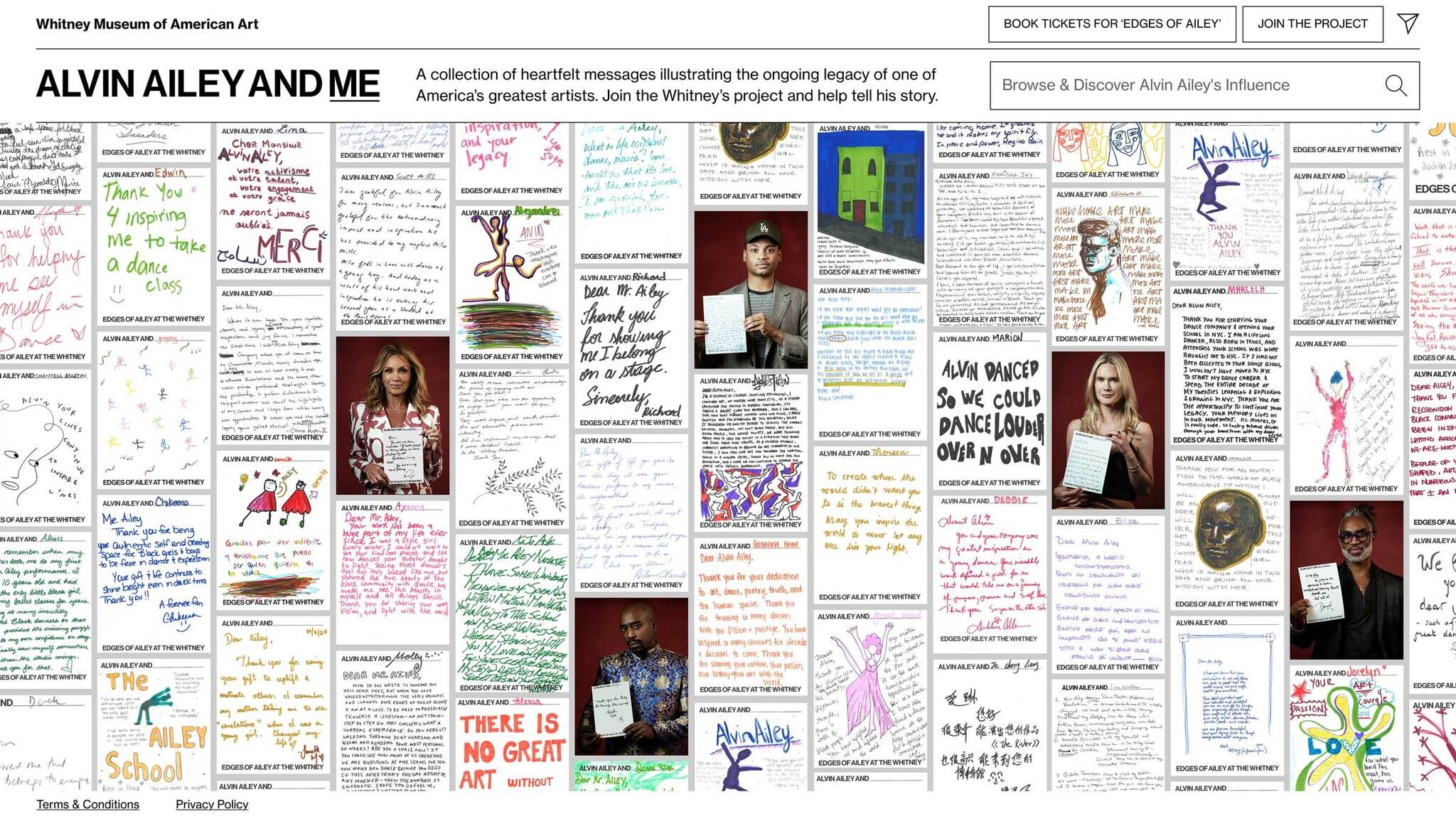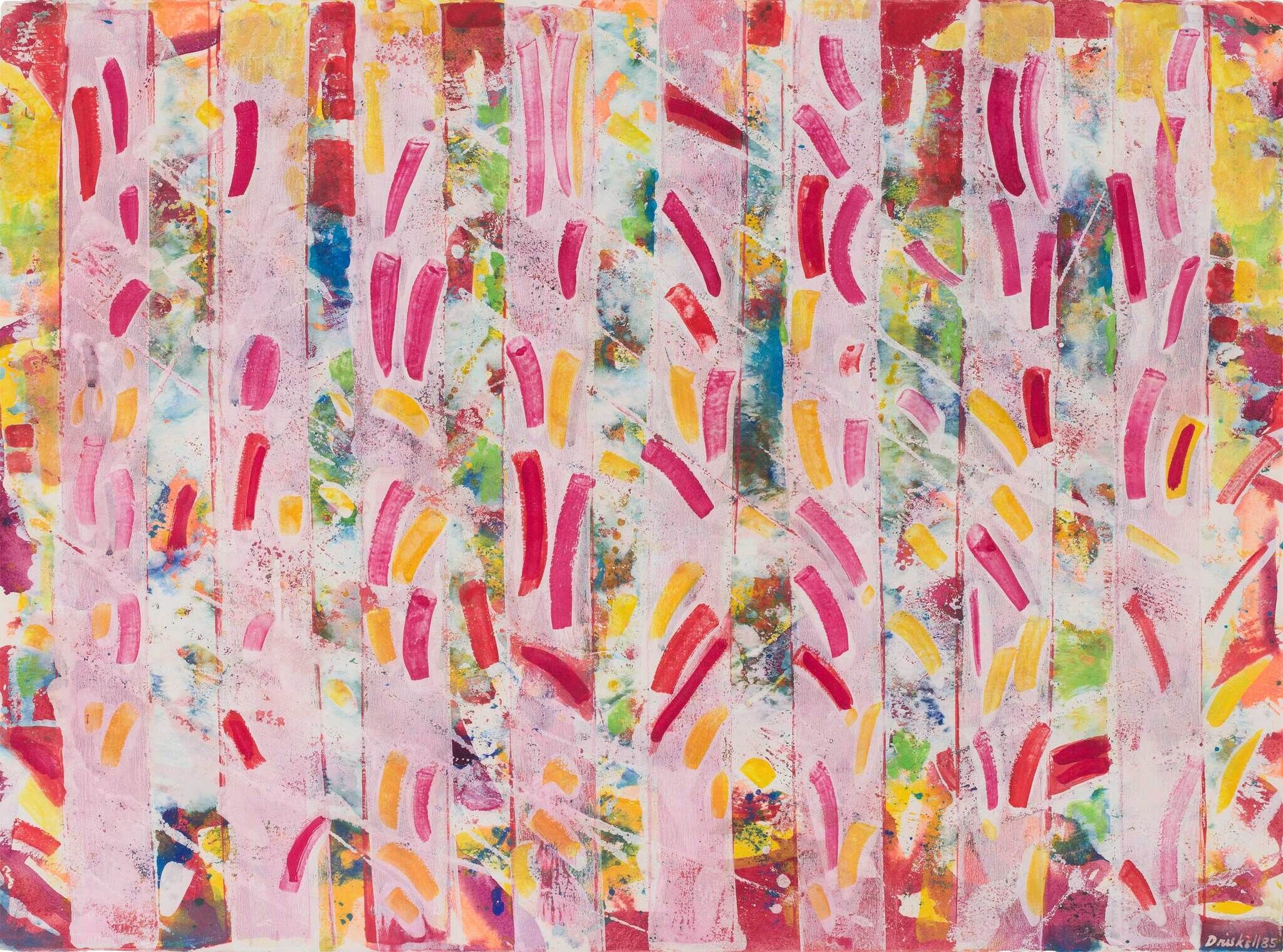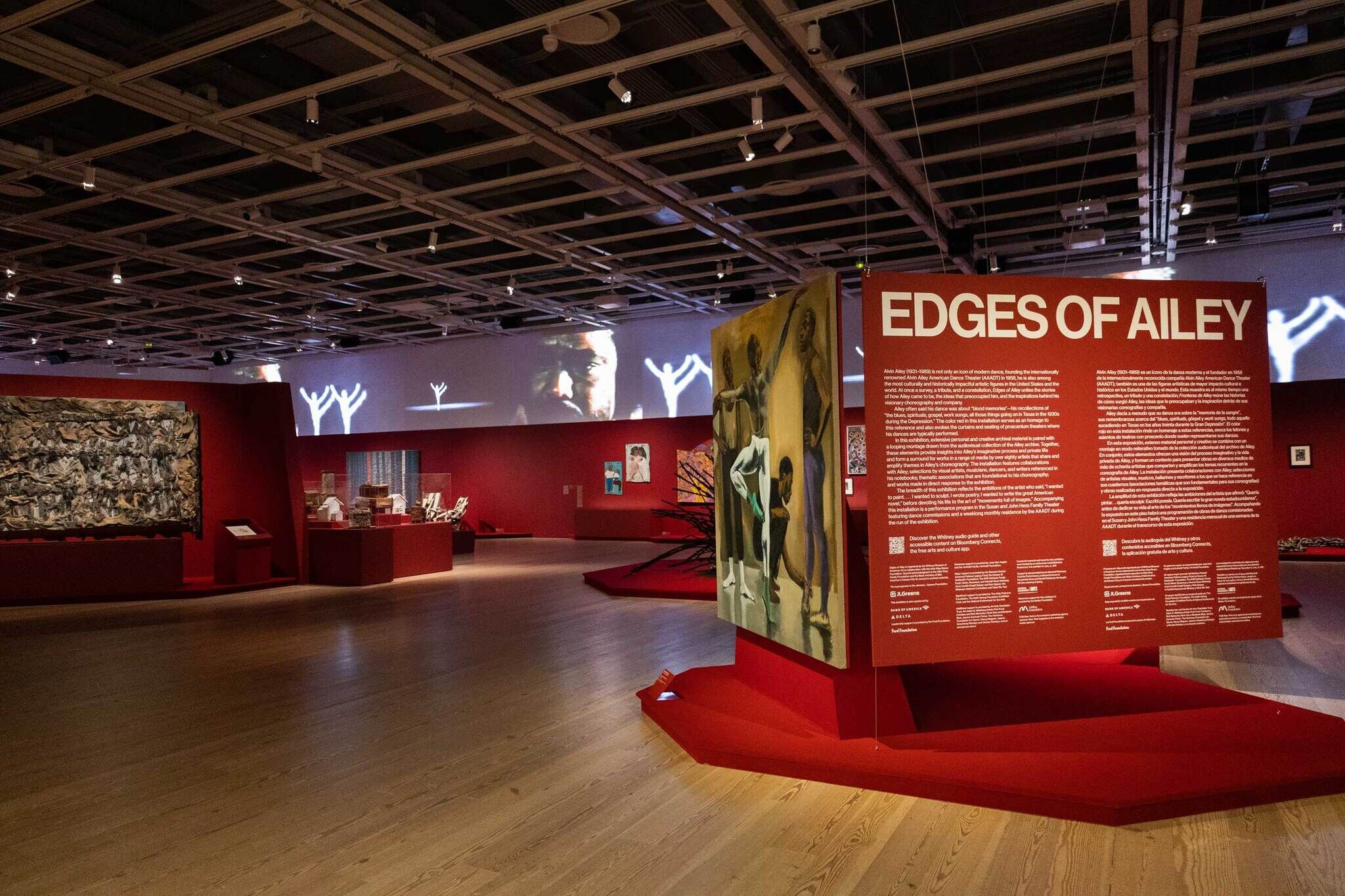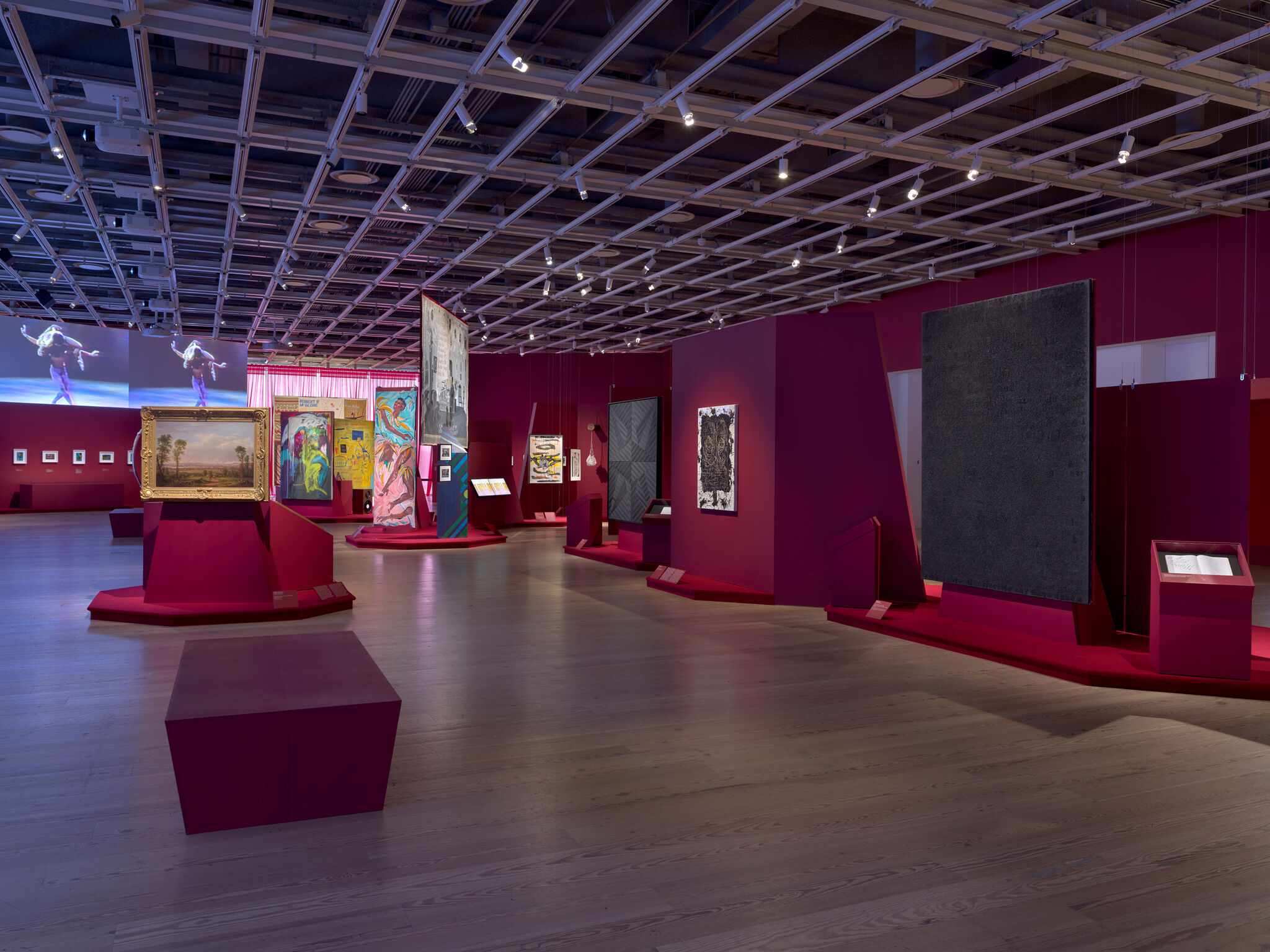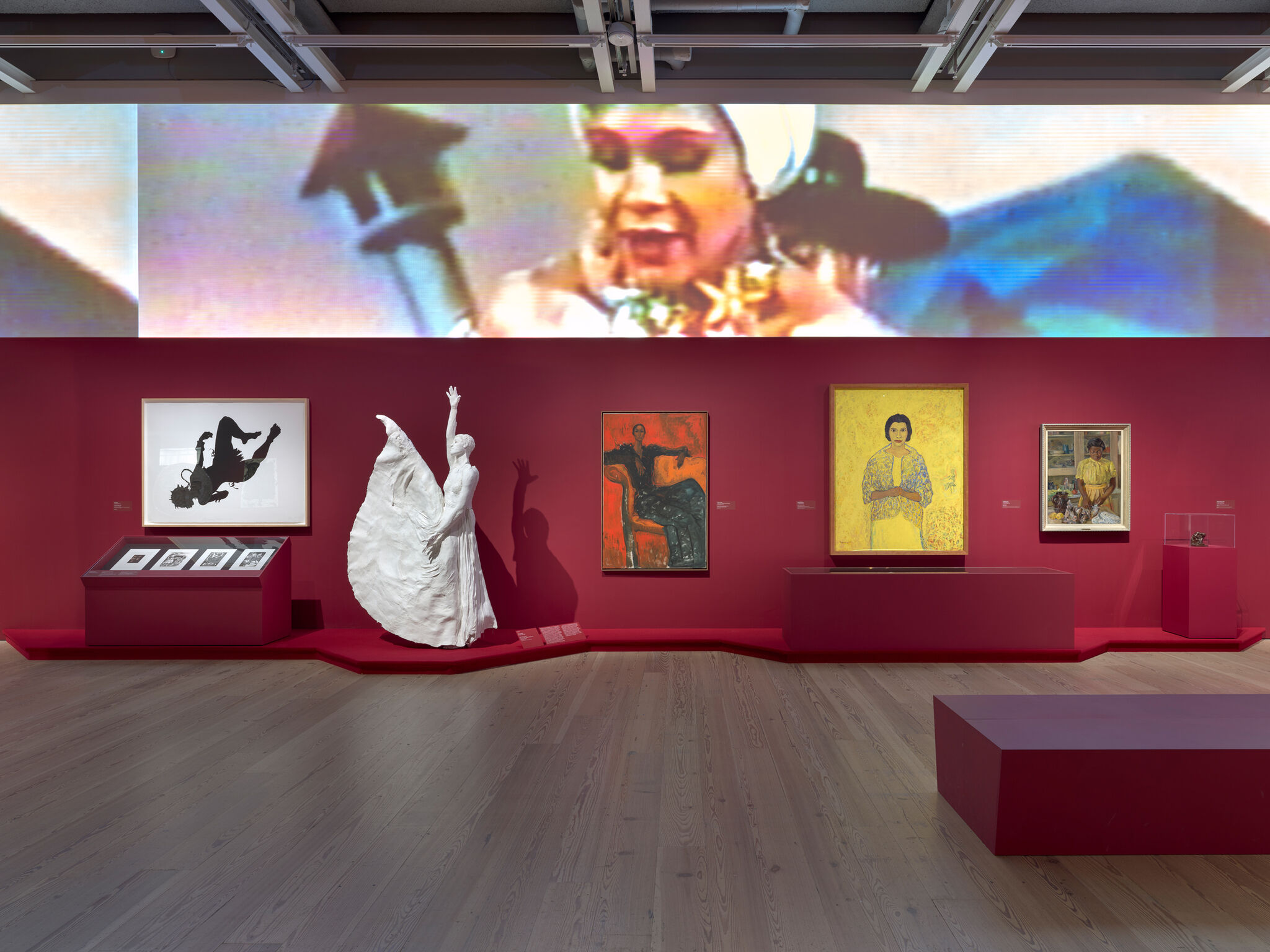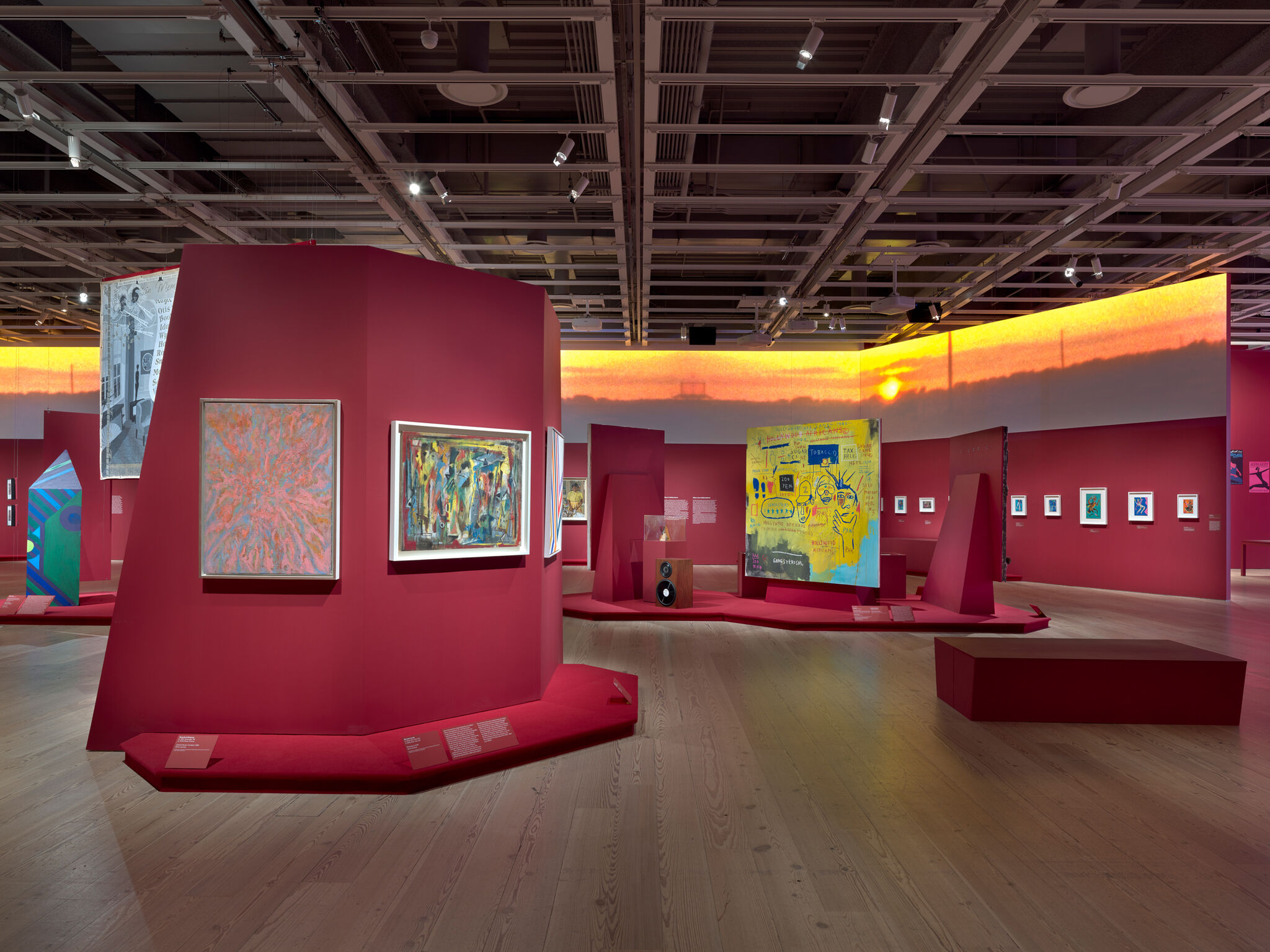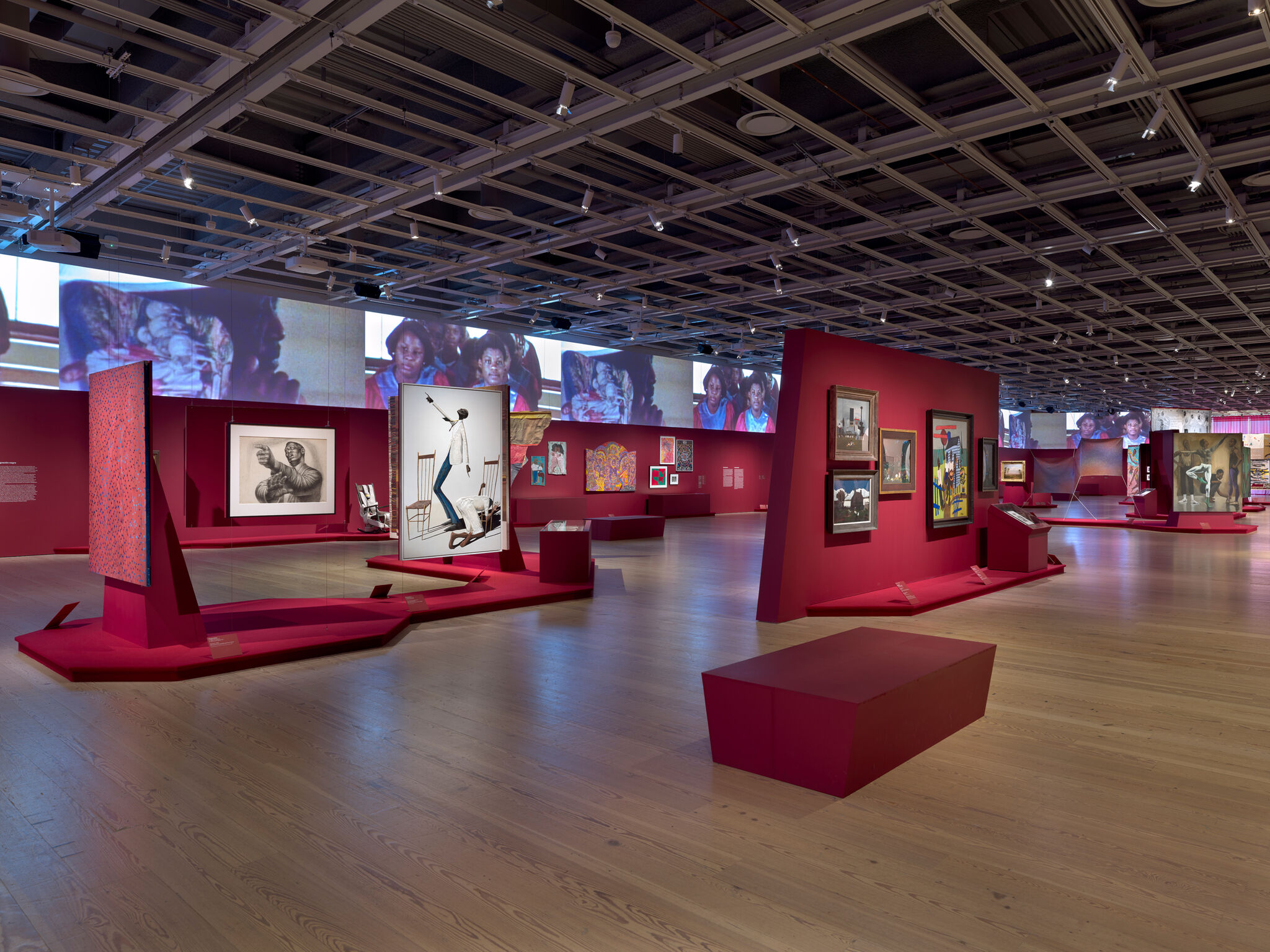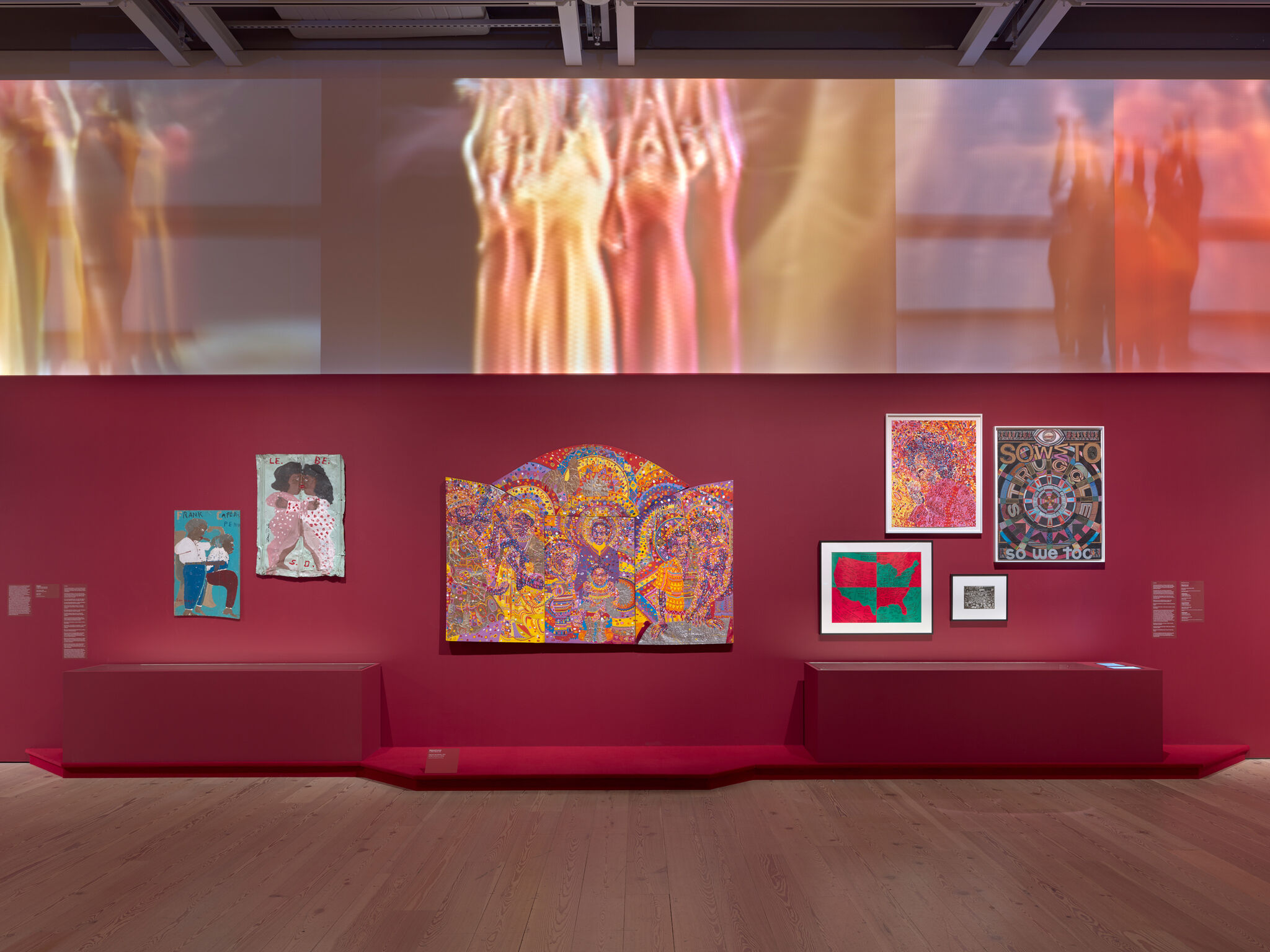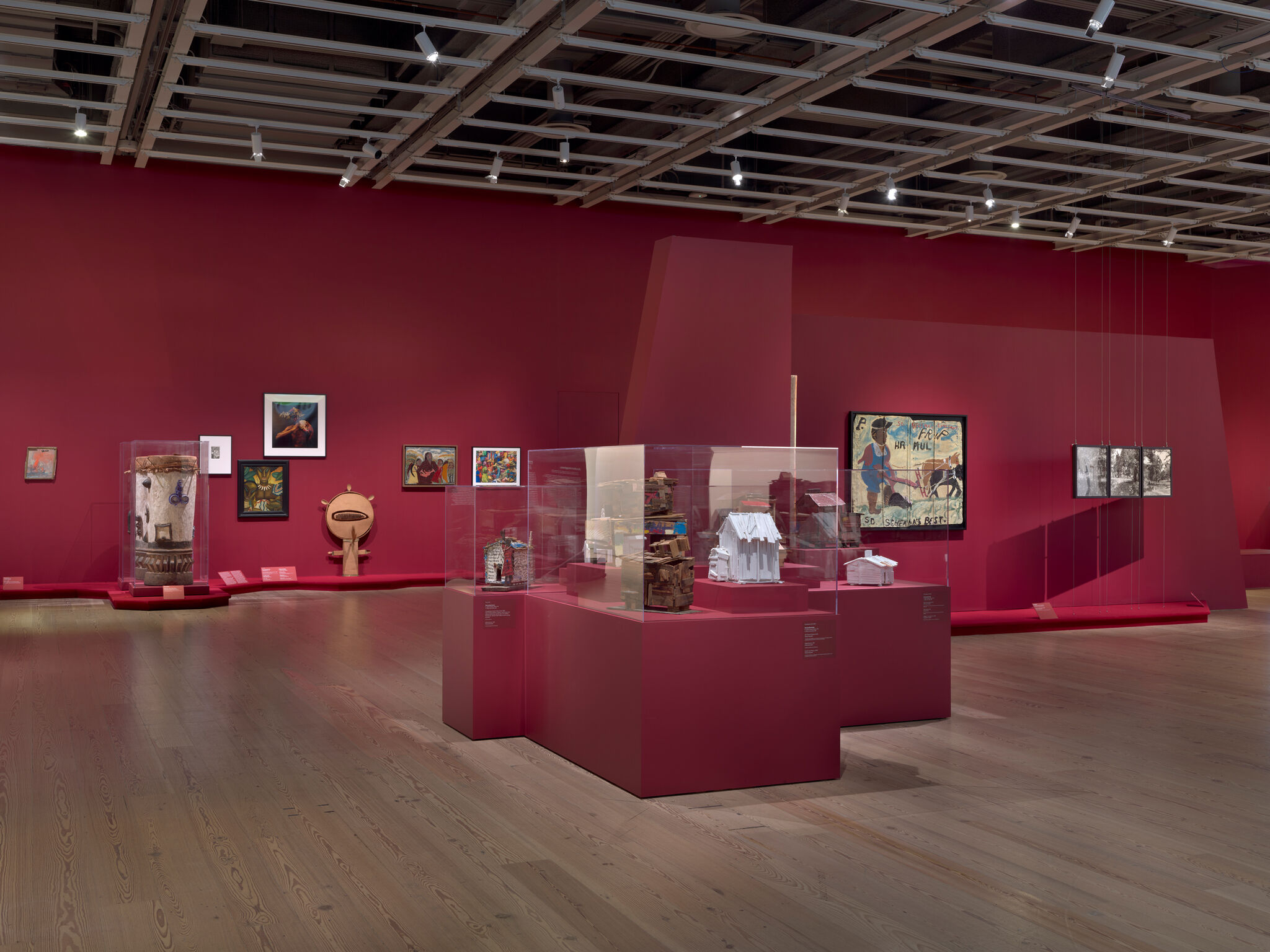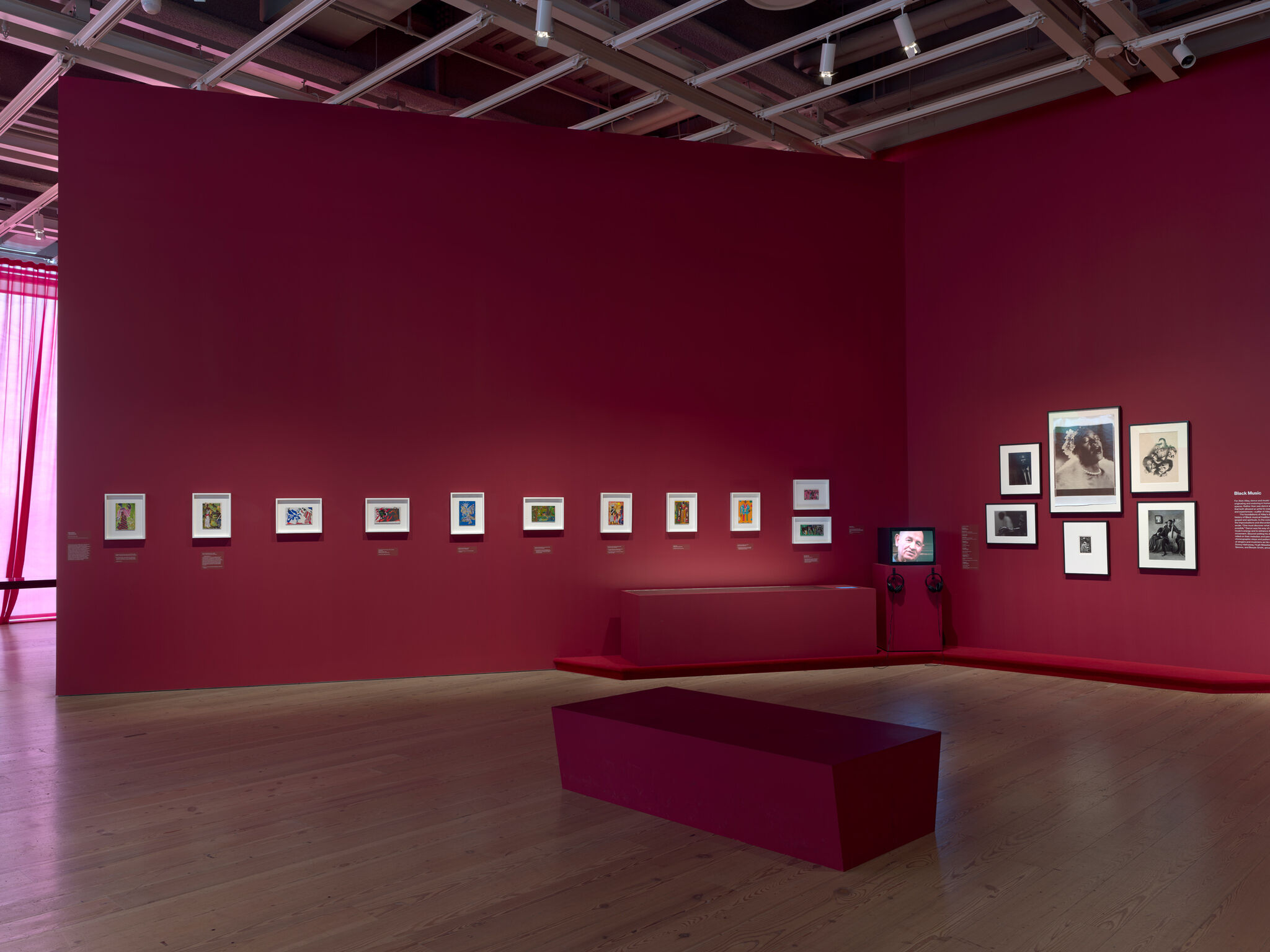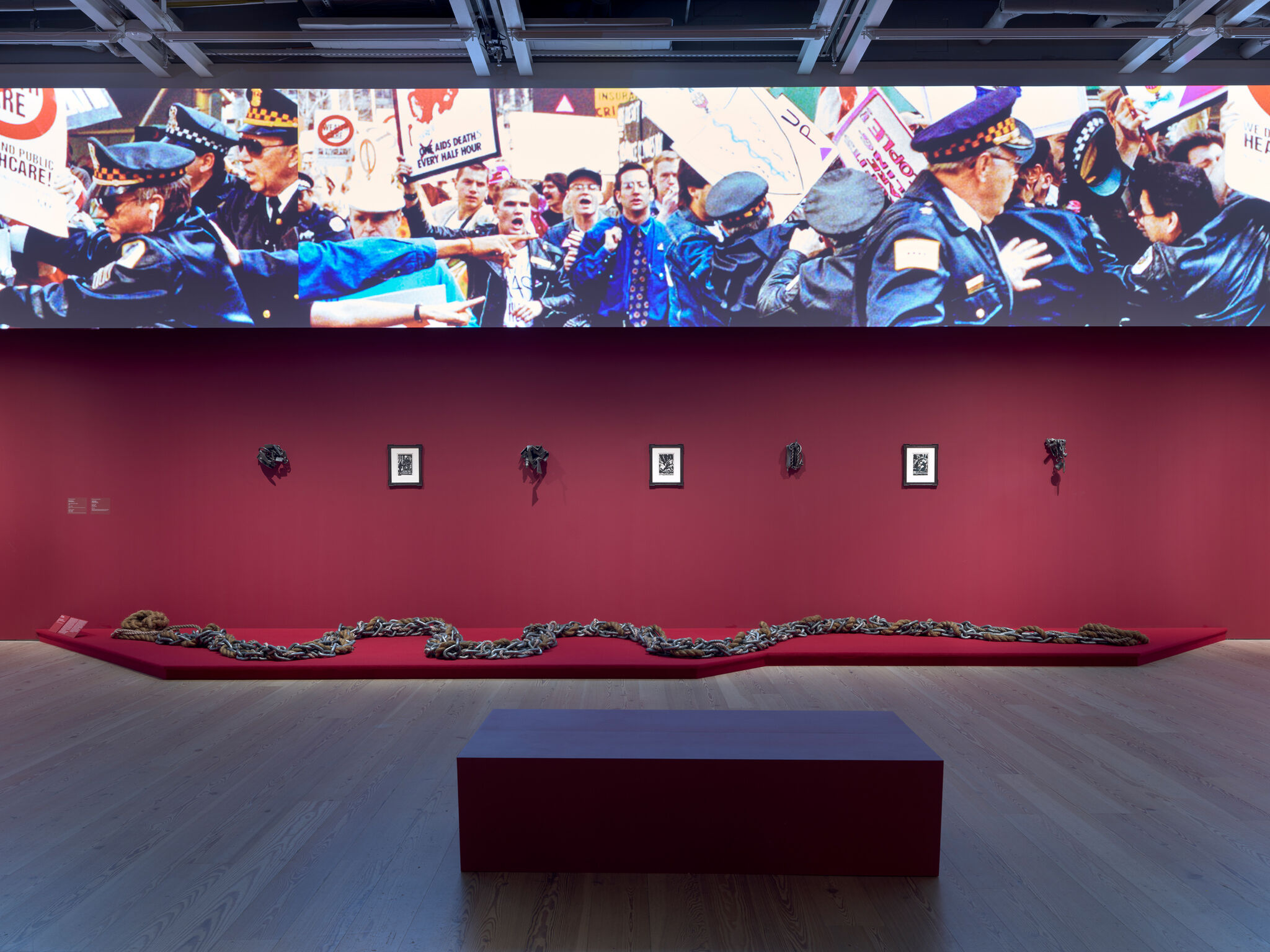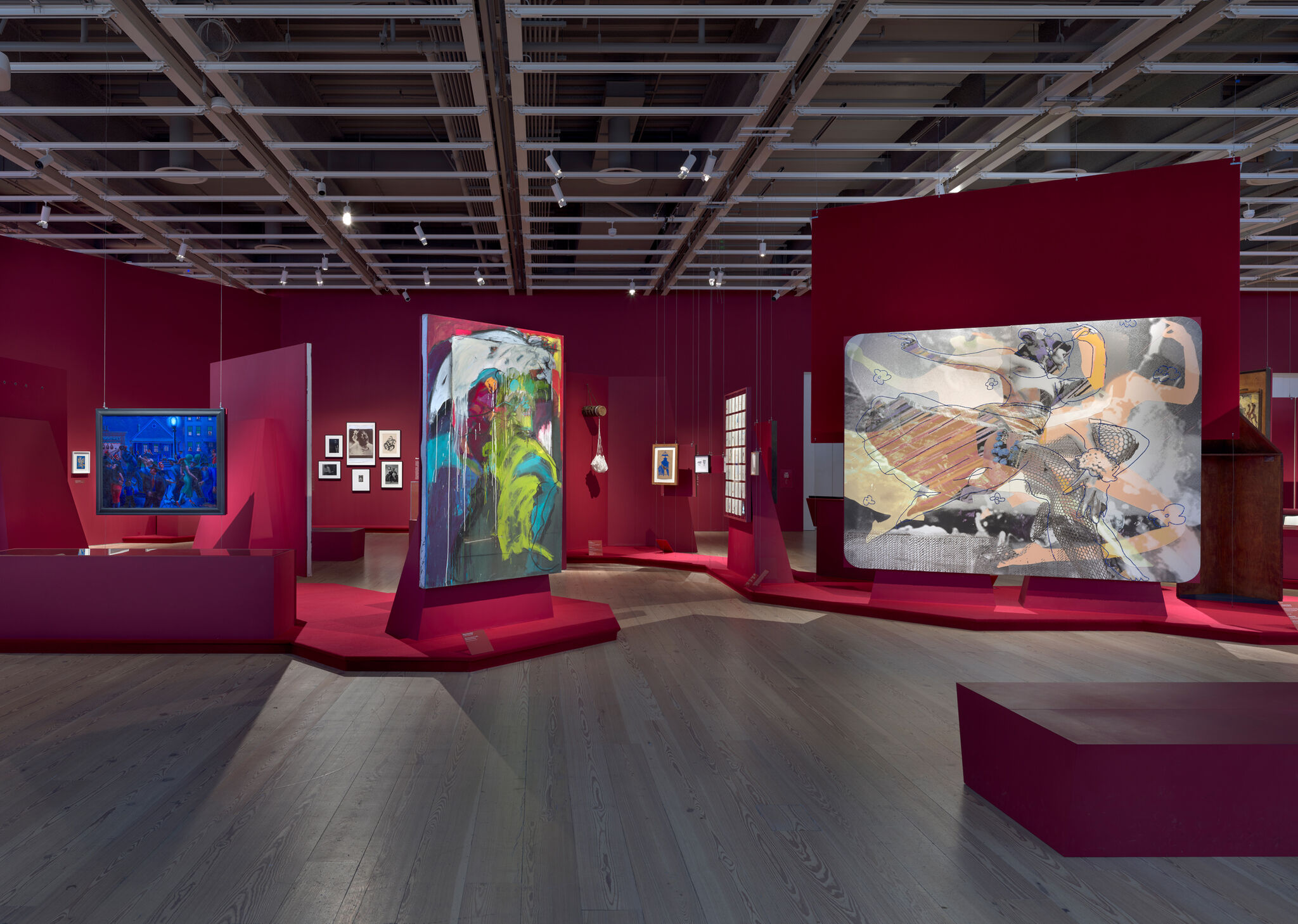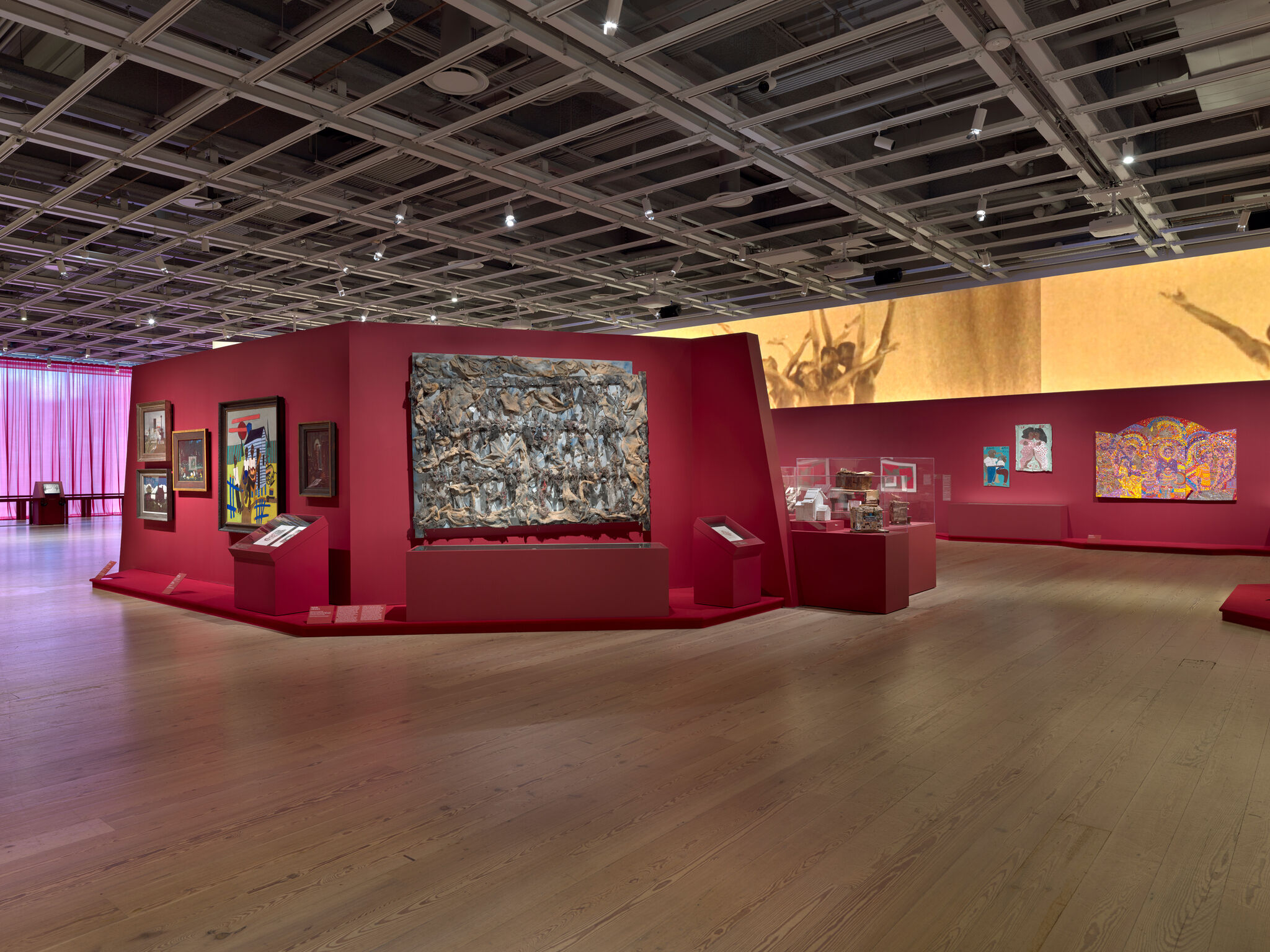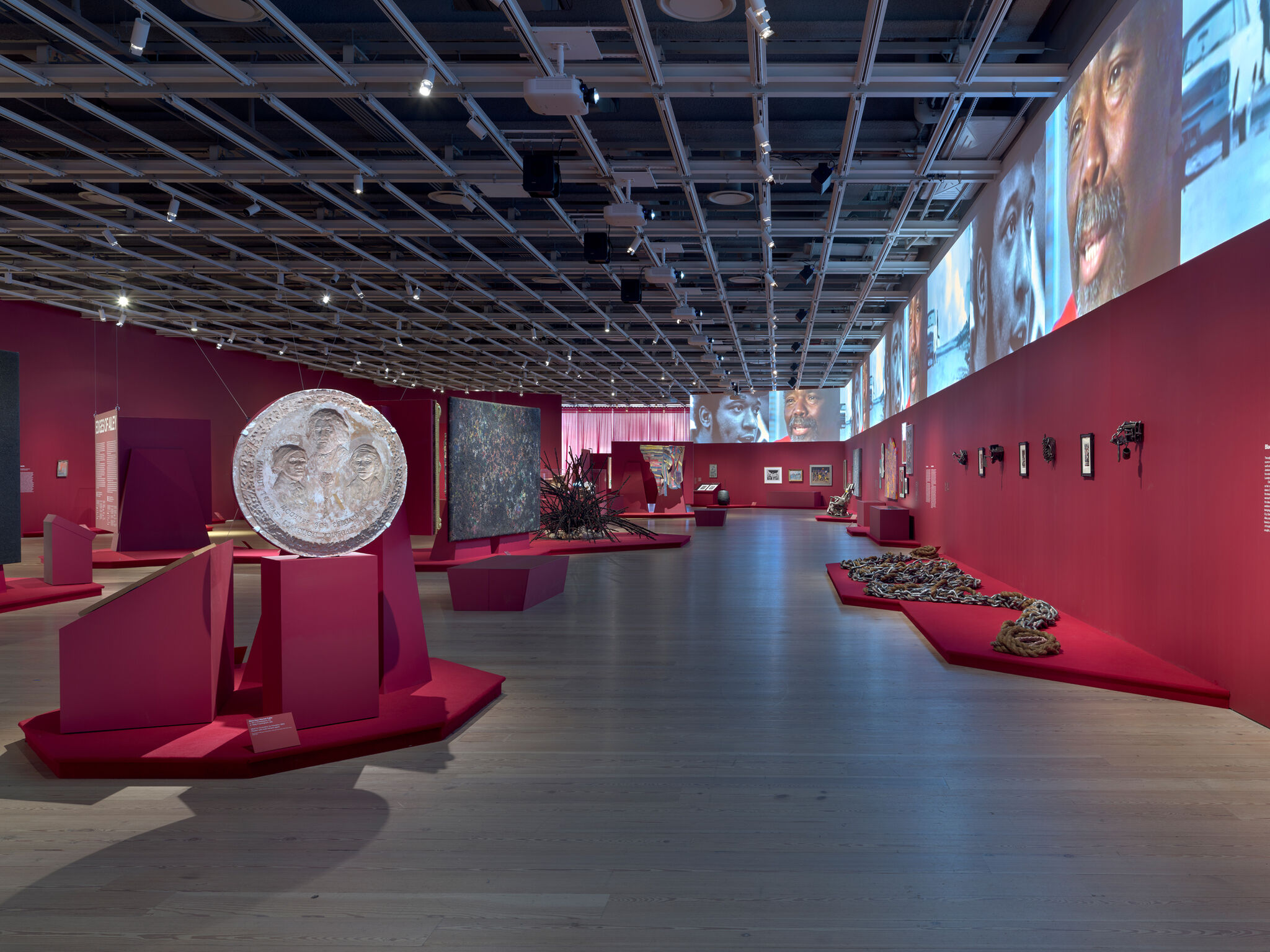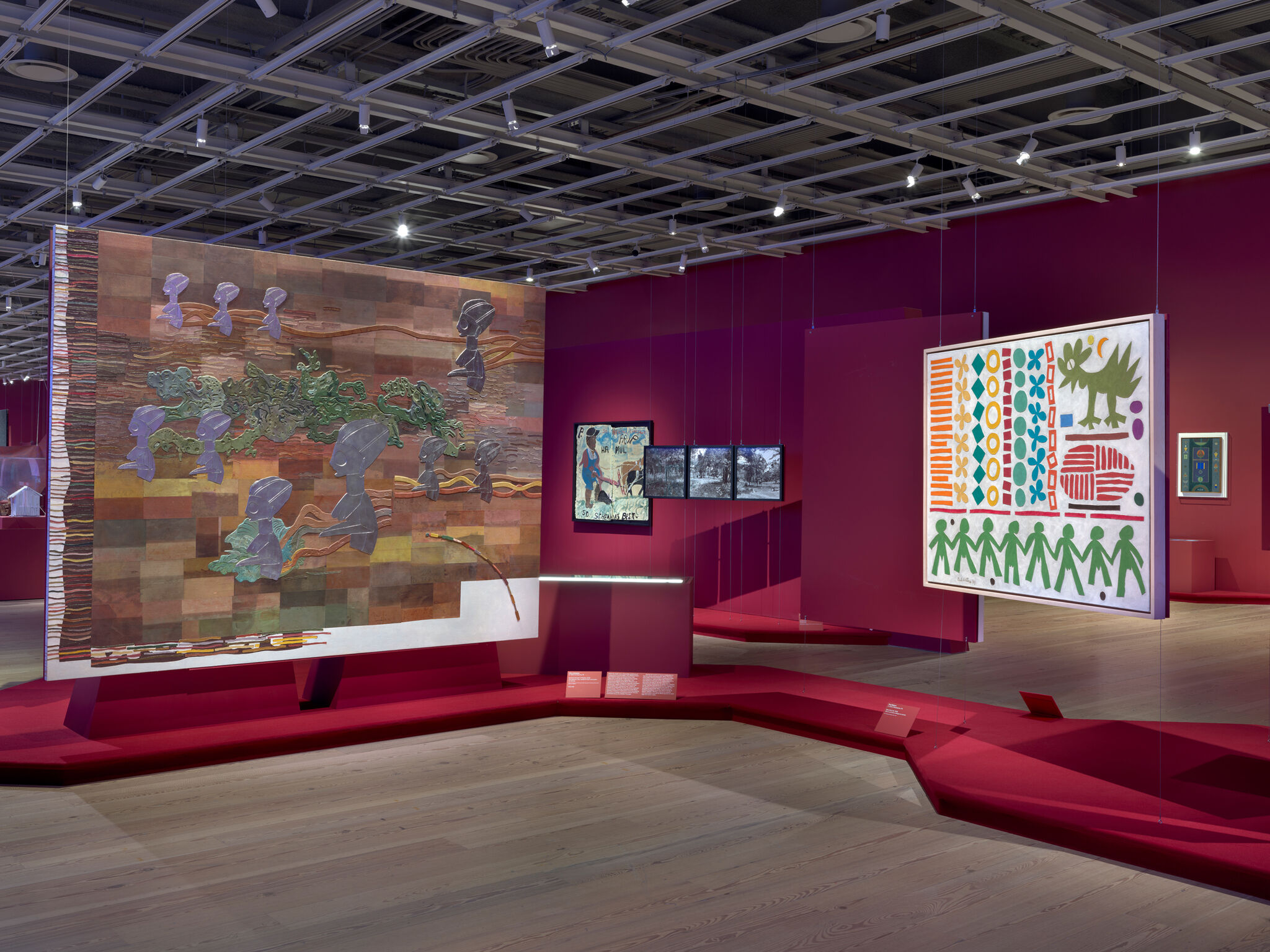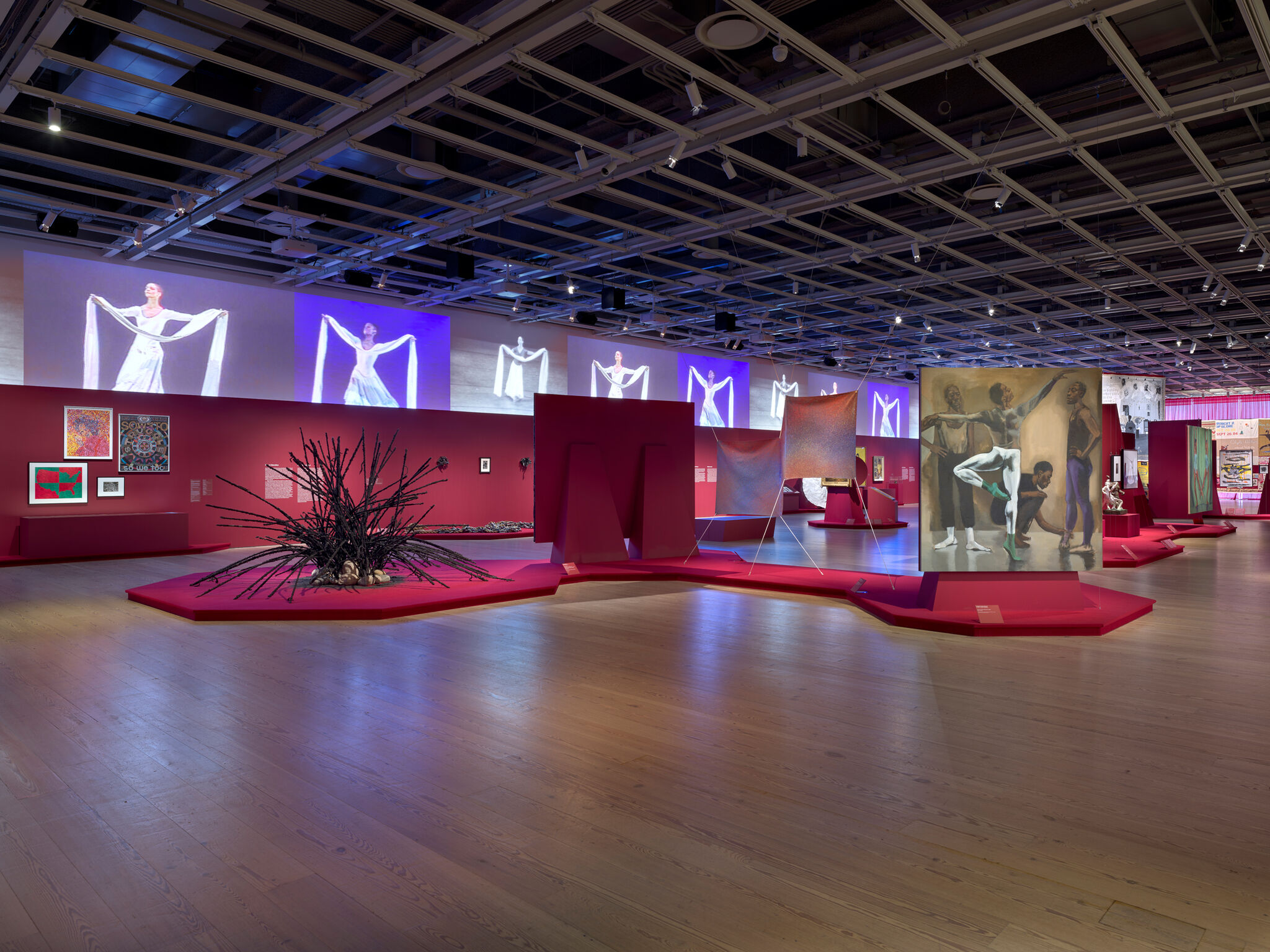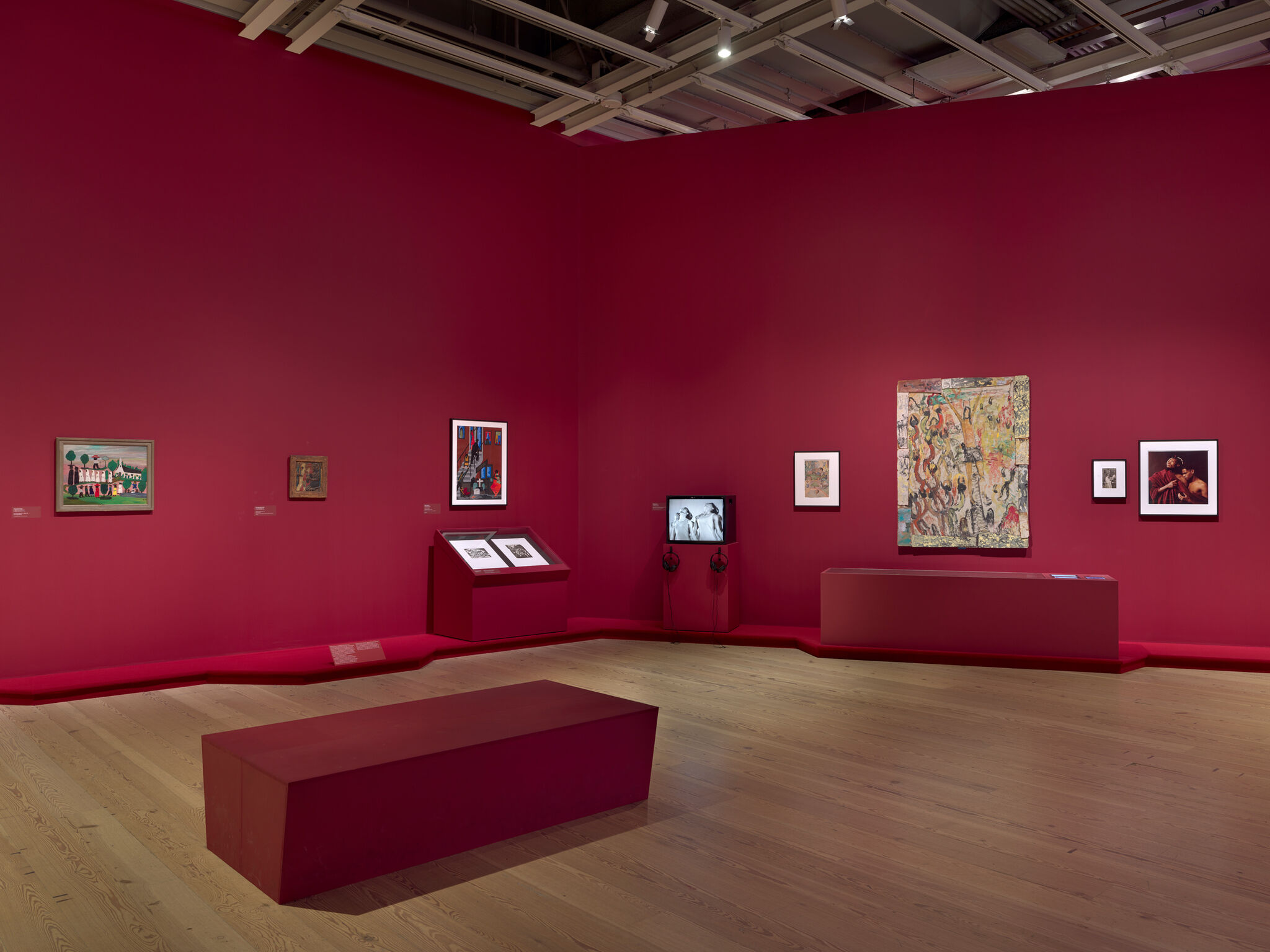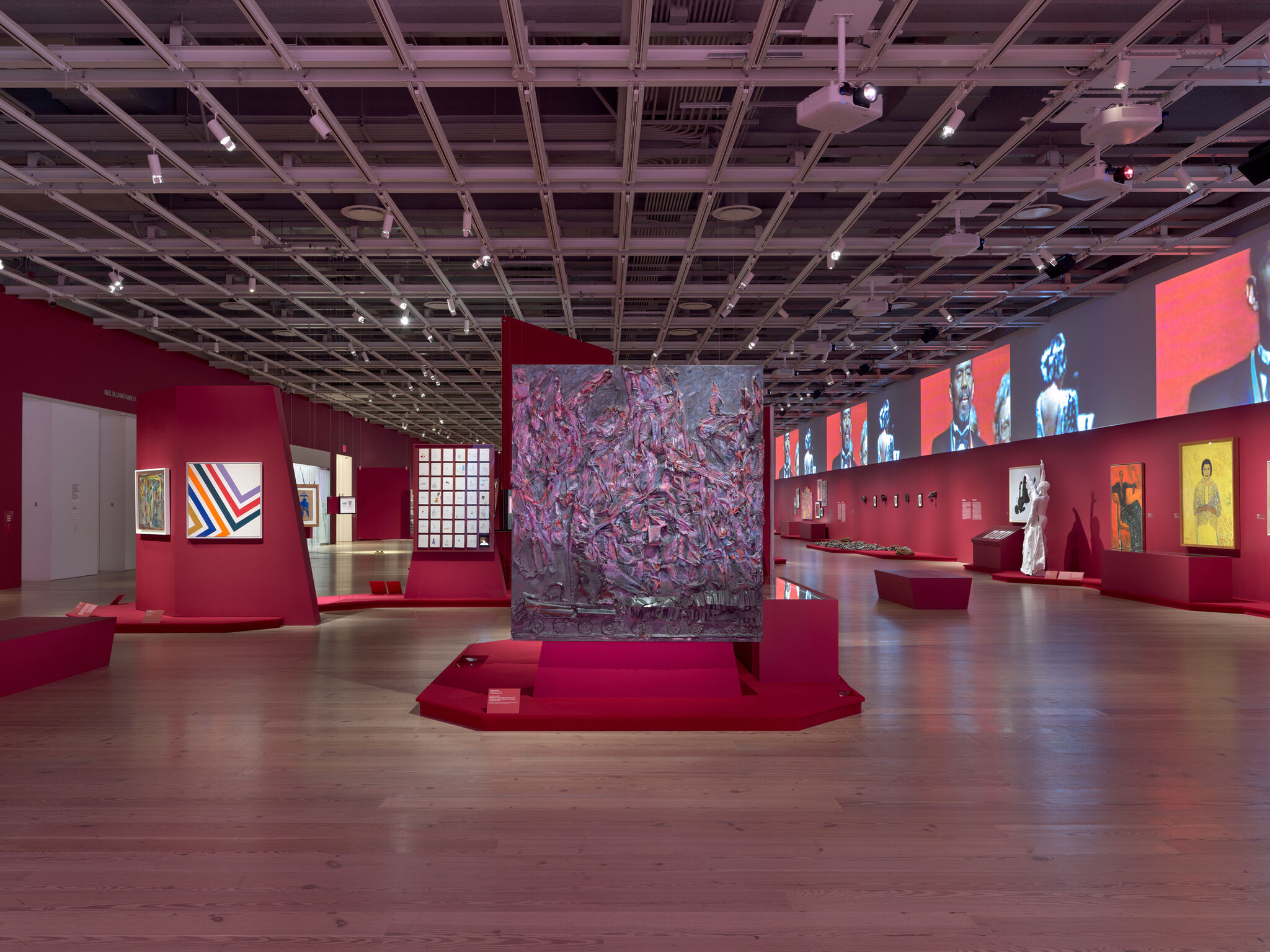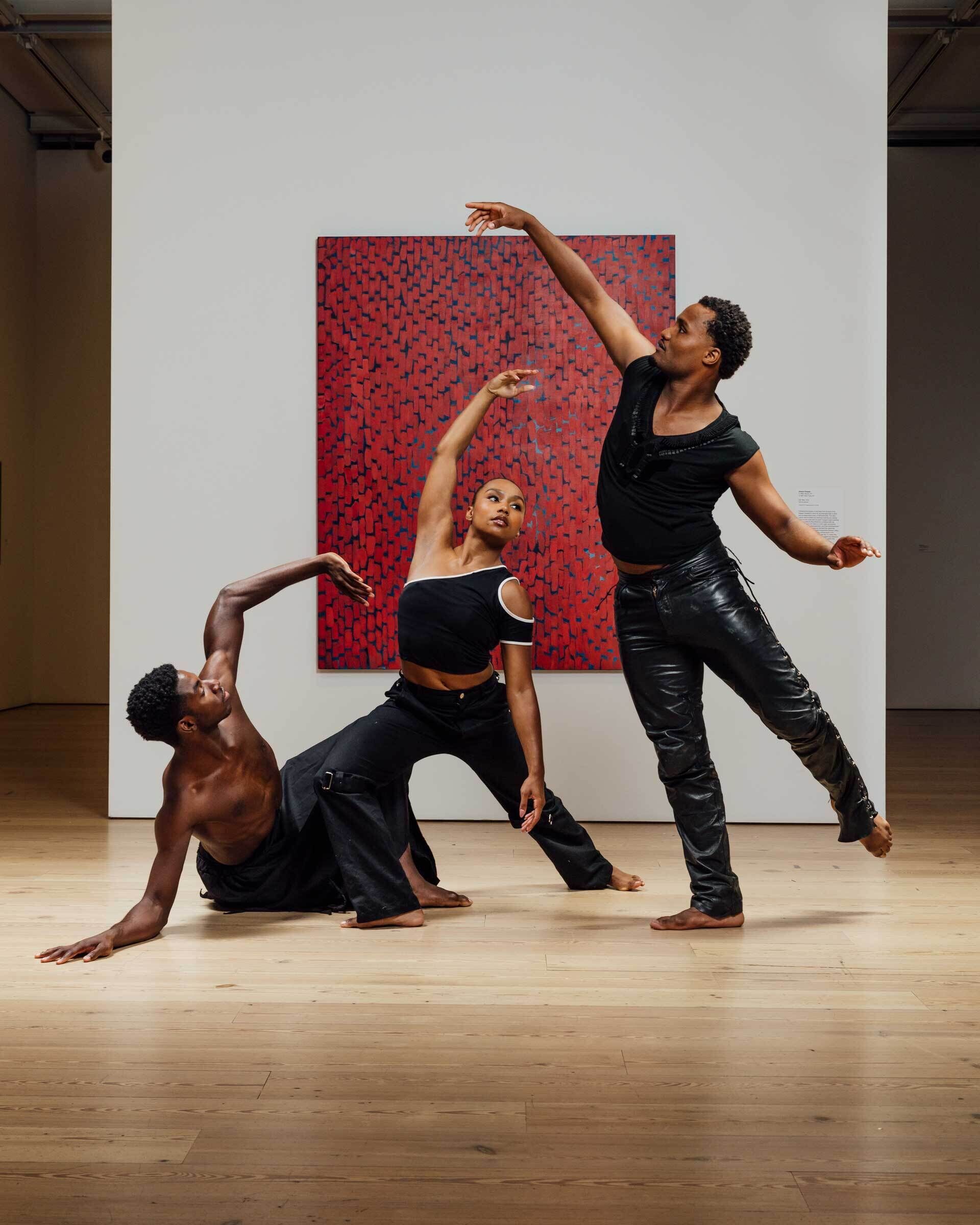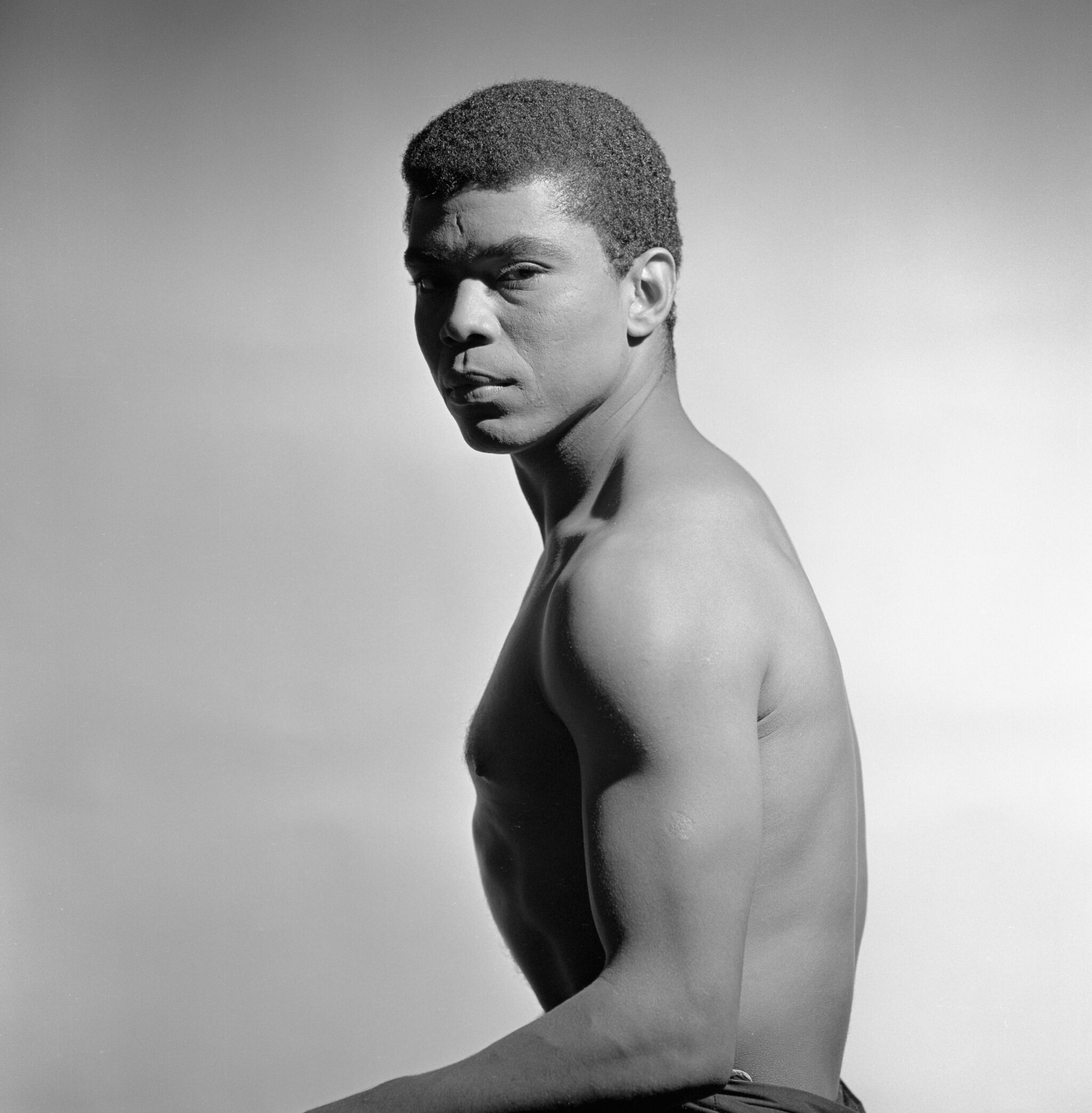Edges of Ailey
Sept 25, 2024–Feb 9, 2025
Edges of Ailey is the first large-scale museum exhibition to celebrate the life, dances, influences, and enduring legacy of visionary artist and choreographer Alvin Ailey (b. 1931, Rogers, Texas; d. 1989, New York, New York). This dynamic showcase—described as an “extravaganza” by curator Adrienne Edwards—brings together visual art, live performance, music, a range of archival materials, and a multi-screen video installation drawn from recordings of Alvin Ailey American Dance Theater (AAADT) repertory to explore the full range of Ailey’s personal and creative life.
Presented at the Museum in two parts, Edges of Ailey consists of an immersive exhibition in the Museum’s 18,000 square-foot fifth-floor galleries—featuring works by more than eighty artists and revelatory archival material—and an ambitious suite of performances in the Museum’s third-floor theater, including AILEY in residence for one week each month during the exhibition.
Sweeping holdings of rarely seen archives, including performance footage, recorded interviews, notebooks, letters, poems, short stories, choreographic notes, drawings, and performance programs and posters gathered from Ailey’s archives and others forge a vital throughline in the gallery. Selections from the Alvin Ailey Archival Papers—courtesy of the Allan Gray Family Foundation and held at the Black Archives of Mid America in Kansas City, Missouri—and the Alvin Ailey Dance Foundation Archives Collection held at the Library of Congress are of singular importance, specially digitized and exhibited for this show’s occasion. A dynamic montage of Ailey’s life and dances will play on loop across an 18-channel video installation created by filmmakers Josh Begley and Kya Lou, with curator Adrienne Edwards.
Ailey’s presence, felt through the video surround and his encased personal effects, envelops a scenic installation of artworks by over eighty artists. These works are arranged by themes that shaped Ailey’s life and dances. Sections span an expanded Black southern imaginary that enfolds histories of the American South with those of the Caribbean, Brazil, and West Africa; the enduring practices of Black spirituality; the profound conditions and effects of Black migration; the resilience for and necessity of an intersectional Black liberation; the prominence of Black women in Ailey’s life; and the robust histories and experiments of Black music; along with the myriad representations of Blackness in dance and meditations on dance after Ailey.
Artists exhibited among Ailey include Jean-Michel Basquiat, Romare Bearden, Faith Ringgold, Alma Thomas, Jacob Lawrence, Rashid Johnson, Kevin Beasley, Kara Walker, and many others. A recent acquisition of Eldren Bailey and new works by Karon Davis, Jennifer Packer, Mickalene Thomas, and Lynette Yiadom-Boakye will be presented for the first time in honor of this landmark exhibition.
Edges of Ailey also offers a rare opportunity for visitors to watch intimate live performances by Alvin Ailey American Dance Theater in the Museum’s third-floor theater. As part of the exhibition's robust live performance program, AILEY is in residence at the Whitney for one week each month, for a total of five weeks and over ninety performances. This gives visitors the opportunity to experience the full scope of Ailey's world and legacy, including performances of classic and contemporary works by the two repertory companies—Alvin Ailey American Dance Theater and Ailey II—as well as showcases by students from The Ailey School, workshops and education programs from Ailey Arts In Education, and classes from Ailey Extension. During the weeks AILEY is not in residence at the Museum, a series of dance commissions by leading choreographers and their collaborators, including Ronald K. Brown, Trajal Harrell, Bill T. Jones, Ralph Lemon, with interdisciplinary artist Kevin Beasley, Sarah Michelson, Okwui Okpokwasili and Peter Born, Will Rawls, Matthew Rushing, Yusha-Marie Sorzano, and Jawole Willa Jo Zollar will be showcased.
Visitors can also see Alvin Ailey American Dance Theater during the company's annual engagement at New York City Center from December 4 to January 5.
Edges of Ailey is organized by the Whitney Museum of American Art in collaboration with the Alvin Ailey Dance Foundation. Special acknowledgment to the Allan Gray Family Foundation and the Black Archives of Mid-America in Kansas City for access to archival materials. The exhibition is curated by Adrienne Edwards, Engell Speyer Family Senior Curator and Associate Director of Curatorial Programs, with Joshua Lubin-Levy, Curatorial Research Associate, and CJ Salapare, Curatorial Assistant, with thanks to Katie Fong, Curatorial Assistant, for research support.
Review accessibility information before visiting Edges of Ailey.
The lead sponsor for Edges of Ailey is the Jerome L. Greene Foundation.

This exhibition is also sponsored by


Leadership support is provided by the Ford Foundation.

Generous support is provided by Judy Hart Angelo and the Arnhold Family | Arnhold Foundation.
Major support is provided by the Barbara Haskell American Fellows Legacy Fund; the Horace W. Goldsmith Foundation; The KHR McNeely Family Fund | Kevin, Rosemary, and Hannah Rose McNeely; Anne-Cecilie Engell Speyer and Rob Speyer; the Whitney’s National Committee; and Clara Wu Tsai.
Significant support is provided by The Holly Peterson Foundation, The Keith Haring Foundation Exhibition Fund, the National Endowment for the Arts, and Denise Littlefield Sobel.
Additional support is provided by A4 Arts Charitable Trust, the Adam D. Weinberg Artists First Fund, Candace and Rick Beinecke, Jeanne Donovan Fisher, Kevin Gan and Benjamin Blad, The Harkness Foundation for Dance, Nancy Magoon, Jeanne Greenberg Rohatyn and Nicolas Rohatyn, and an anonymous donor.
Curatorial research and travel for this exhibition were funded by an endowment established by Rosina Lee Yue and Bert A. Lies, Jr., MD.
Support is also provided by the Marshall Weinberg Fund for Performance, endowed in honor of his parents Anna and Harold Weinberg who taught him the meaning of giving.

Generous support for the catalogue is provided by the Mellon Foundation.

FCB New York is the exclusive marketing agency sponsor. New York magazine is the exclusive media sponsor.
Performances
Edges of Ailey includes a suite of performances in the Museum’s third-floor theater. Alongside the Alvin Ailey American Dance Theater and Ailey II, the performance program will feature an array of artists inspired by and responding to the legacy of Alvin Ailey.
Performance tickets are now on sale. Tickets are limited and must be booked in advance. Performance ticket holders will receive same-day access to the Edges of Ailey exhibition during regular Museum hours. Visitors can also see Alvin Ailey American Dance Theater during the company's annual engagement at New York City Center from December 4 to January 5.
-
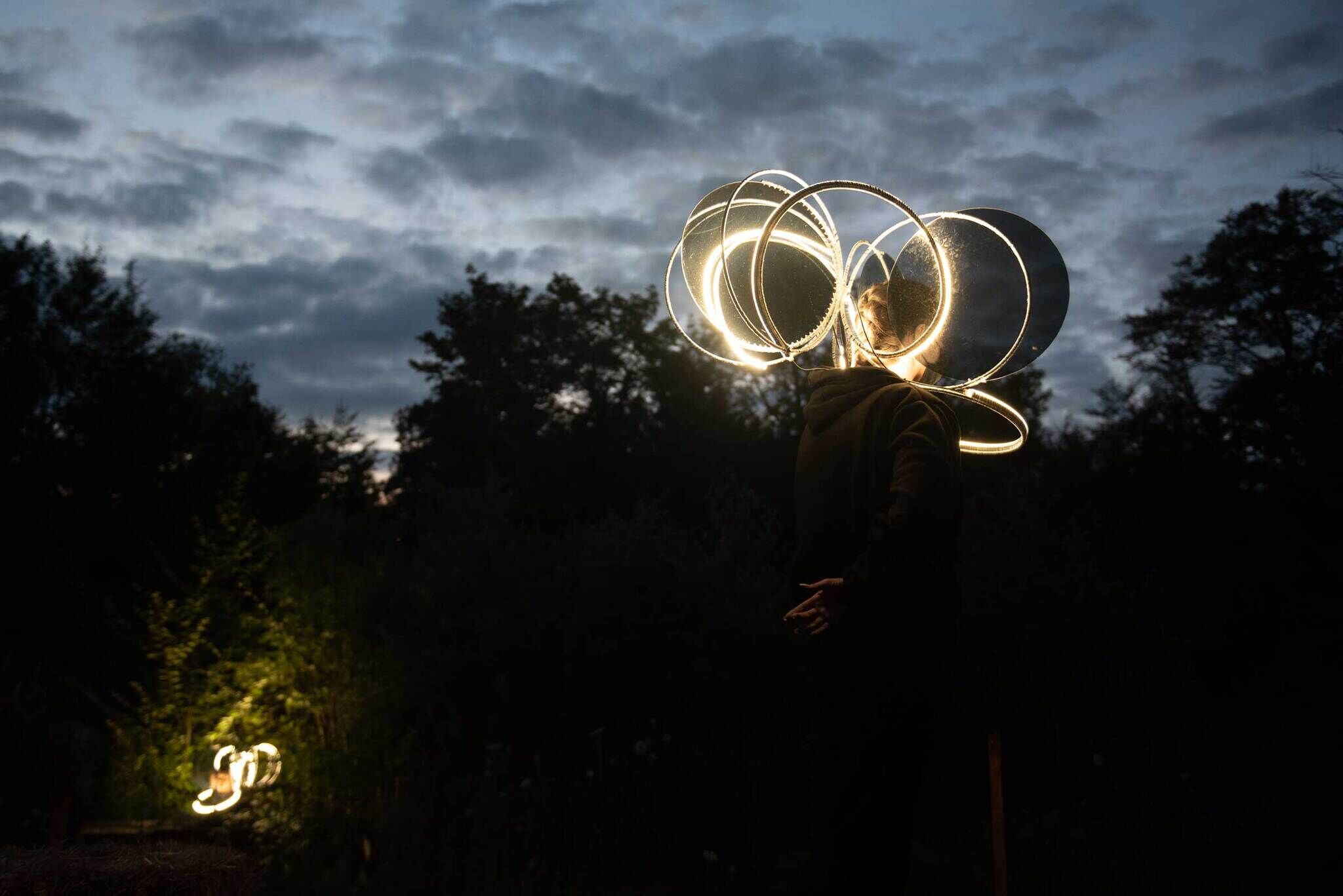
Okwui Okpokwasili and Peter Born: let slip, hold sway
Repeats
Thursday, February 6, 2025
1 pm -
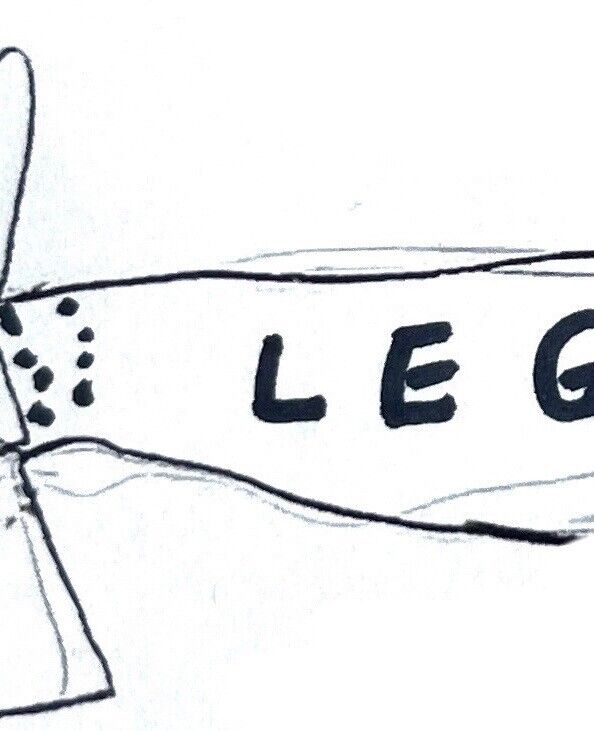
Sarah Michelson
city of dancers-
the eternal return of the sameRepeats
Tuesday, January 28, 2025
9 am -
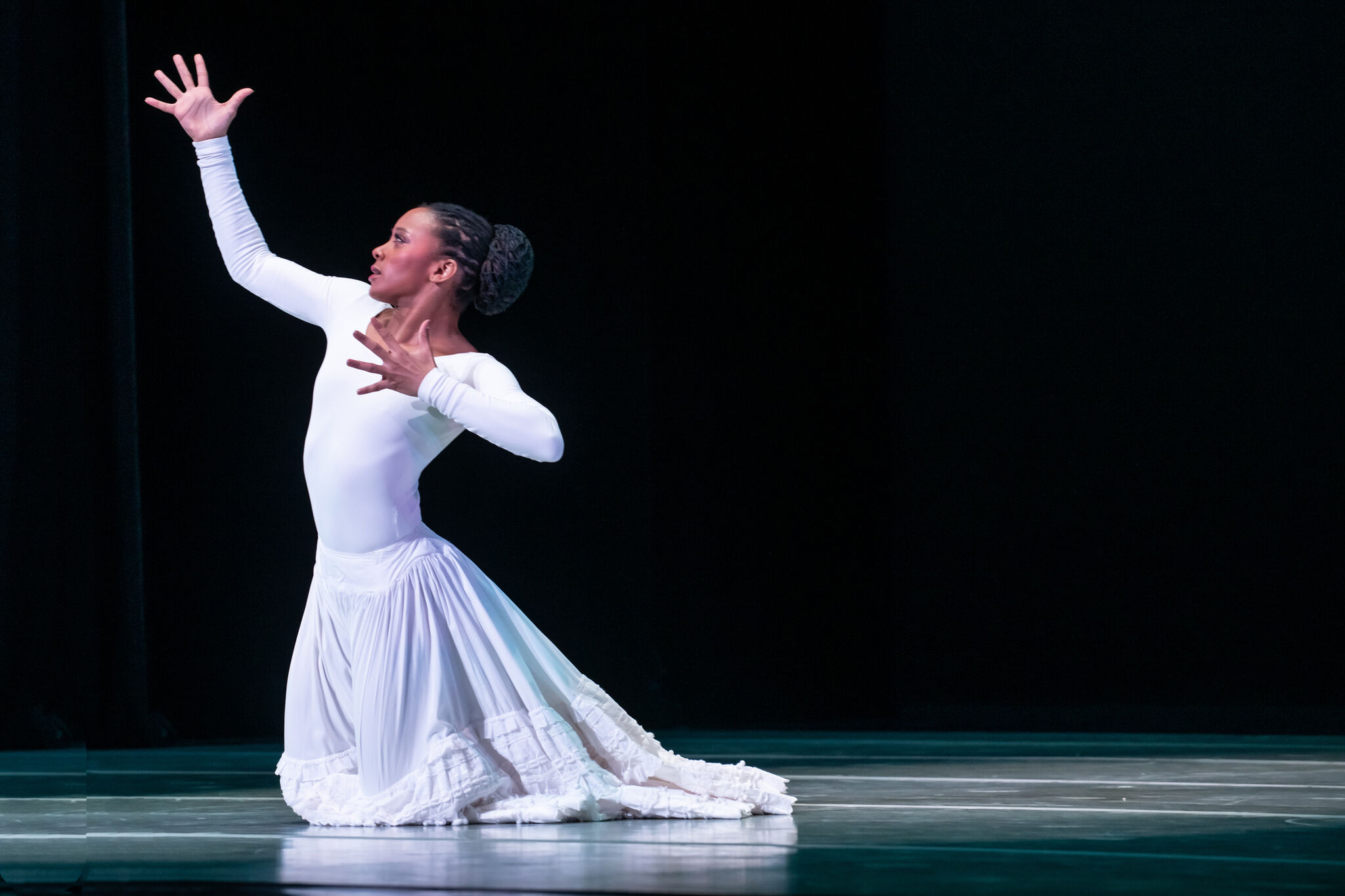
Judith Jamison / Cry Tribute with Panel Discussion
Repeats
Friday, January 24, 2025
4:30 pm -
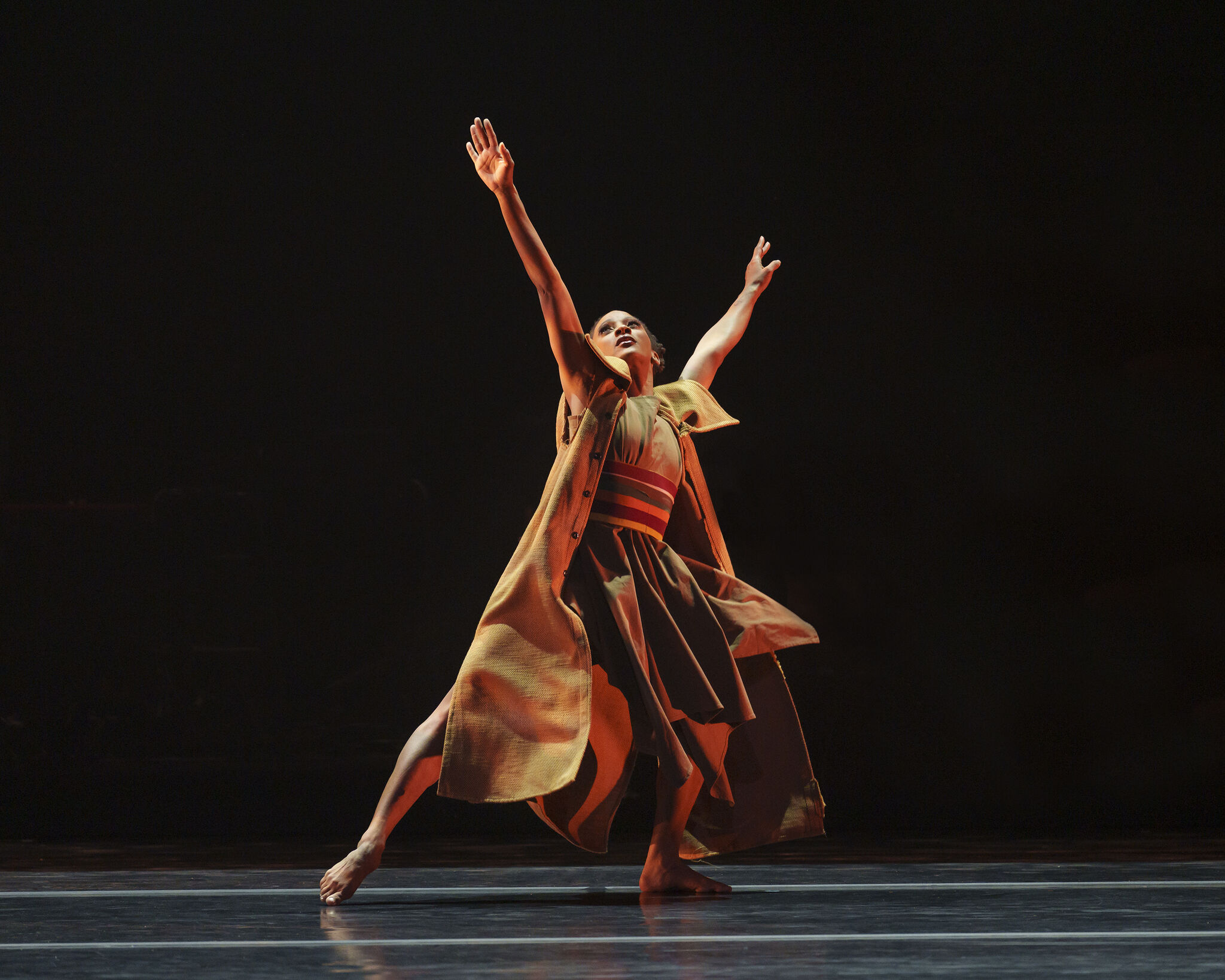
Alvin Ailey American Dance Theater
Program II: Excerpts from New WorksRepeats
Wednesday, January 22, 2025
5 pm -
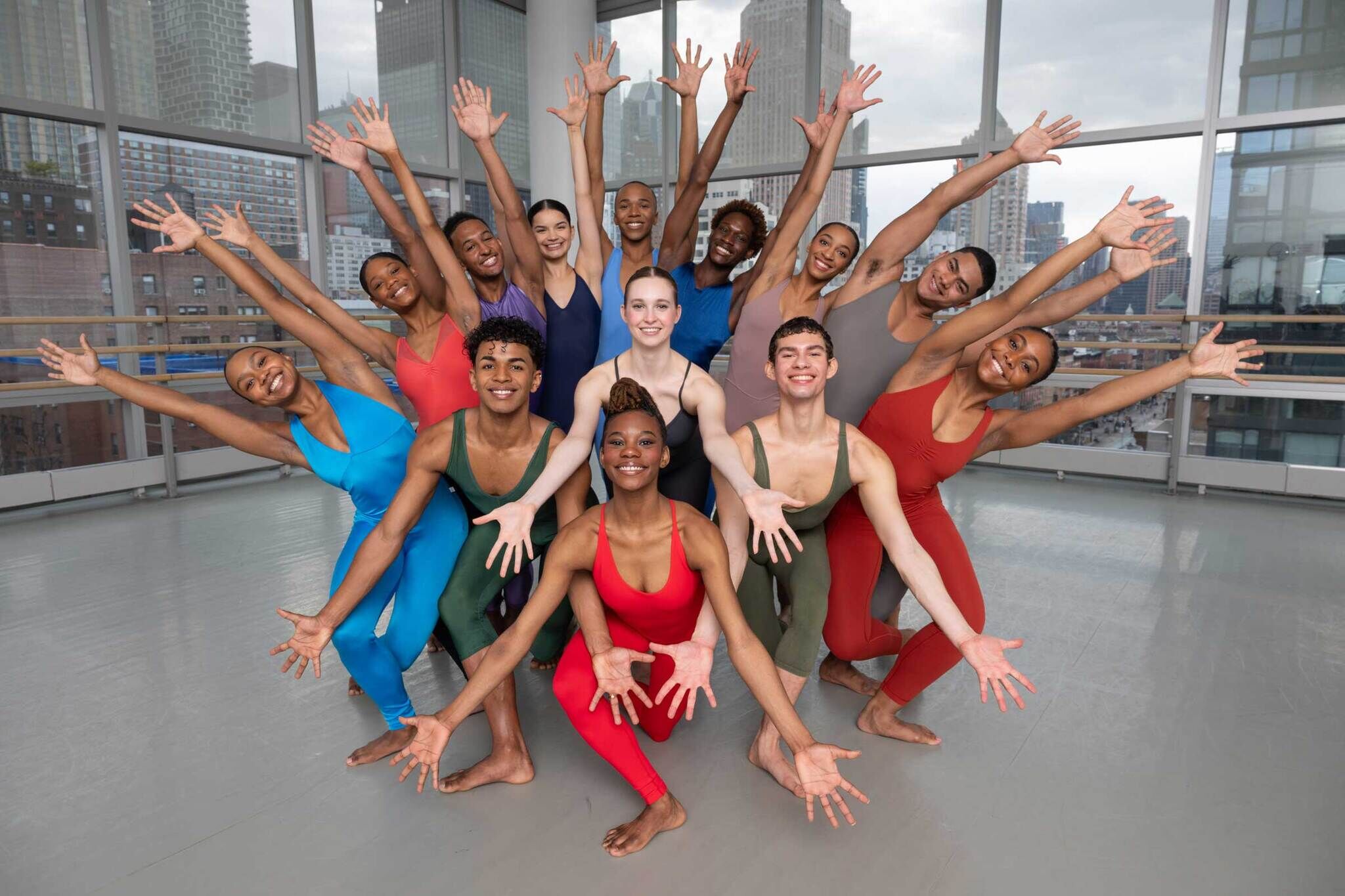
The Ailey School: Ailey Student Performance Group
Repeats
Wednesday, January 22, 2025
11 am -
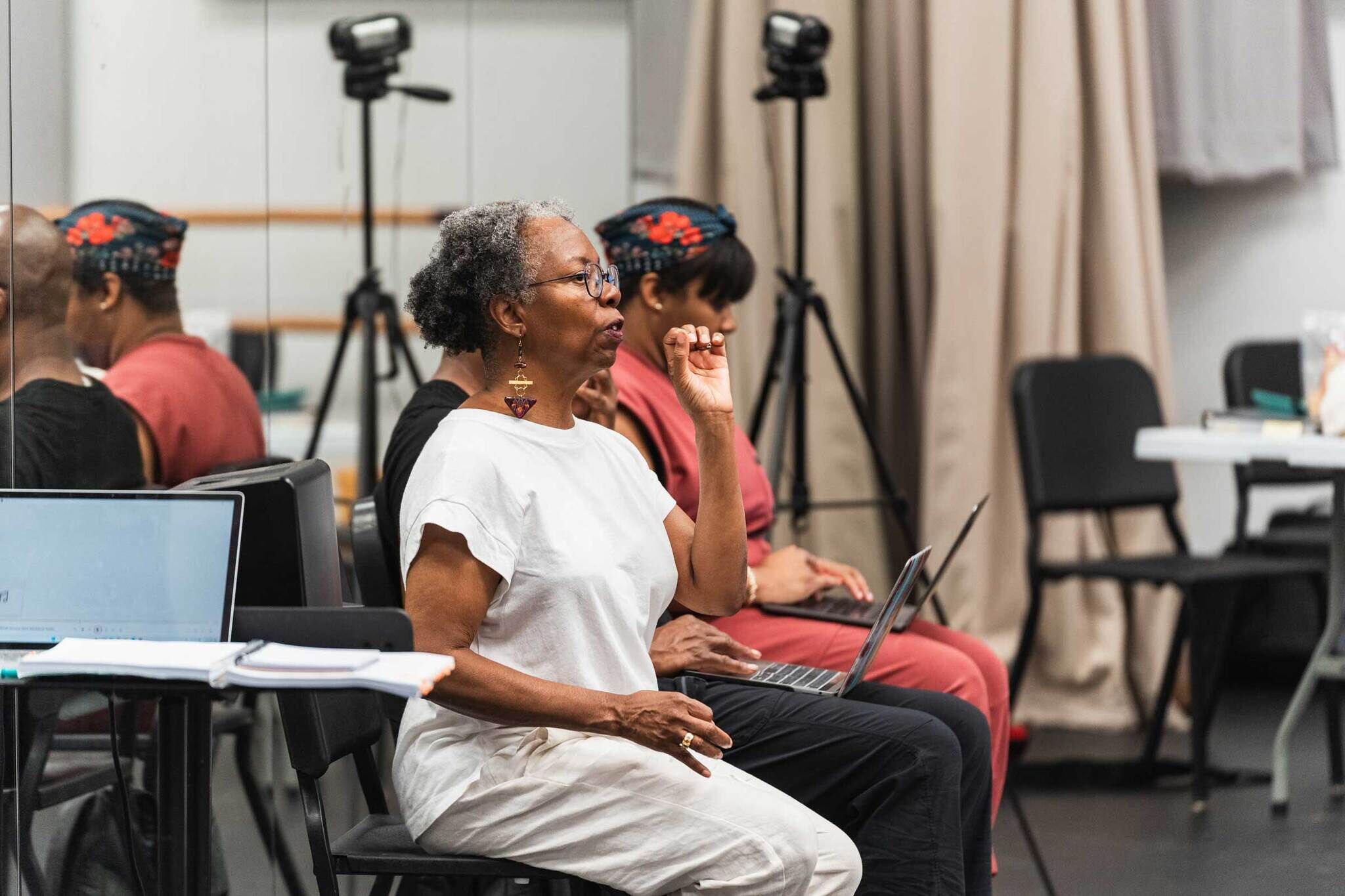
Jawole Willa Jo Zollar: LifeDance IV The Emperor…The Old Woman Persists
Repeats
Friday, January 17, 2025
4 pm
Alvin Ailey and Me
Alvin Ailey and Me is a project that asks members of the public to share personal stories of how the enduring legacy and influence of iconic dancer, choreographer, and artist Alvin Ailey's life and work has impacted them. These stories celebrate and showcase the lasting, far-reaching impact that this influential artist continues to have: a key theme in Edges of Ailey.
Southern Imaginary
1
“I’m Alvin Ailey. I’m a choreographer. I’m a Black man whose roots are in the sun and the dirt of the South.”
Ailey’s “blood memories” sprang from his childhood experiences living and being raised by his mother, Lula Cooper, in rural Texas. Their reality of working in homes and the fields—which was in large part defined by itinerancy, poverty, and widespread racism shared by many Black Americans in the South—had grown out of enslavement, sharecropping, and Jim Crow–era legislation. Ailey’s recollections of these years would become the foundation of his choreography. He saw an enduring spirit, a source of pride and creativity, and a profound sense of humanity in the people and places he remembered.
Through his extensive travels and touring, along with the imprints of Katherine Dunham and Pearl Primus, Ailey came to know the American South as inseparable from a larger southern imaginary, encompassing the Caribbean, Brazil, and West Africa. The mass marketing of calypso music and dance styles in the United States entertainment industry in the 1950s, like the flourishing of jazz in the 1920s, made a commodity of this rich culture while also providing Black performers with artistic opportunities and higher wages. He would enfold these diasporic entanglements into his dances through movement, ritual, culture, and mythology, all instigated by and imagined through the ingenuity and inventiveness of Black makers and communities.
Artists
- Terry Adkins
- Alvin Ailey
- Emma Amos
- Benny Andrews
- Ellsworth Ausby
- Eldren Bailey
- Richmond Barthé
- Jean-Michel Basquiat
- Romare Bearden
- Kevin Beasley
- John Biggers
- Beverly Buchanan
- Elizabeth Catlett
- Karon Davis
- Roy DeCarava
- Beauford Delaney
- Thornton Dial
- Aaron Douglas
- Sam Doyle
- David Driskell
- Robert Duncanson
- Melvin Edwards
- Rotimi Fani-Kayode
- Meta Vaux Warrick Fuller
- Charles Gaines
- Ellen Gallagher
- Theaster Gates
- Sam Gilliam
- David Hammons
- Lyle Ashton Harris
- Maren Hassinger
- Palmer Hayden
- Barkley L. Hendricks
- Geoffrey Holder
- Lonnie Holley
- Clementine Hunter
- Hector Hyppolite
- Wadsworth Jarrell
- Rashid Johnson
- William H. Johnson
- Loïs Mailoi Jones
- Jacob Lawrence
- Ralph Lemon
- Norman Lewis
- Samella Lewis
- Glenn Ligon
- James Little
- Antonio Lopez and Juan Ramos
- Mary Lovelace O'Neal
- AI Loving
- Kerry James Marshall
- Archibald John Motley, Jr.
- Thomas Nast
- Senga Nengudi
- John Outterbridge
- Joe Overstreet
- Jennifer Packer
- Gordon Parks
- Fon peoples
- Horace Pippin
- Noah Purifoy
- Martin Puryear
- Faith Ringgold
- Betye Saar
- Lorna Simpson
- Alma Thomas
- Blaise Tobia
- Bill Traylor
- Makers unknown
- Rubem Valentim
- James Van Der Zee
- Carl Van Vechten
- Kara Walker
- Paul Waters
- Carrie Mae Weems
- Charles White
- Kandis Williams
- Hale Aspacio Woodruff
- Lynette Yiadom-Boakye
- Purvis Young
Events
View all-
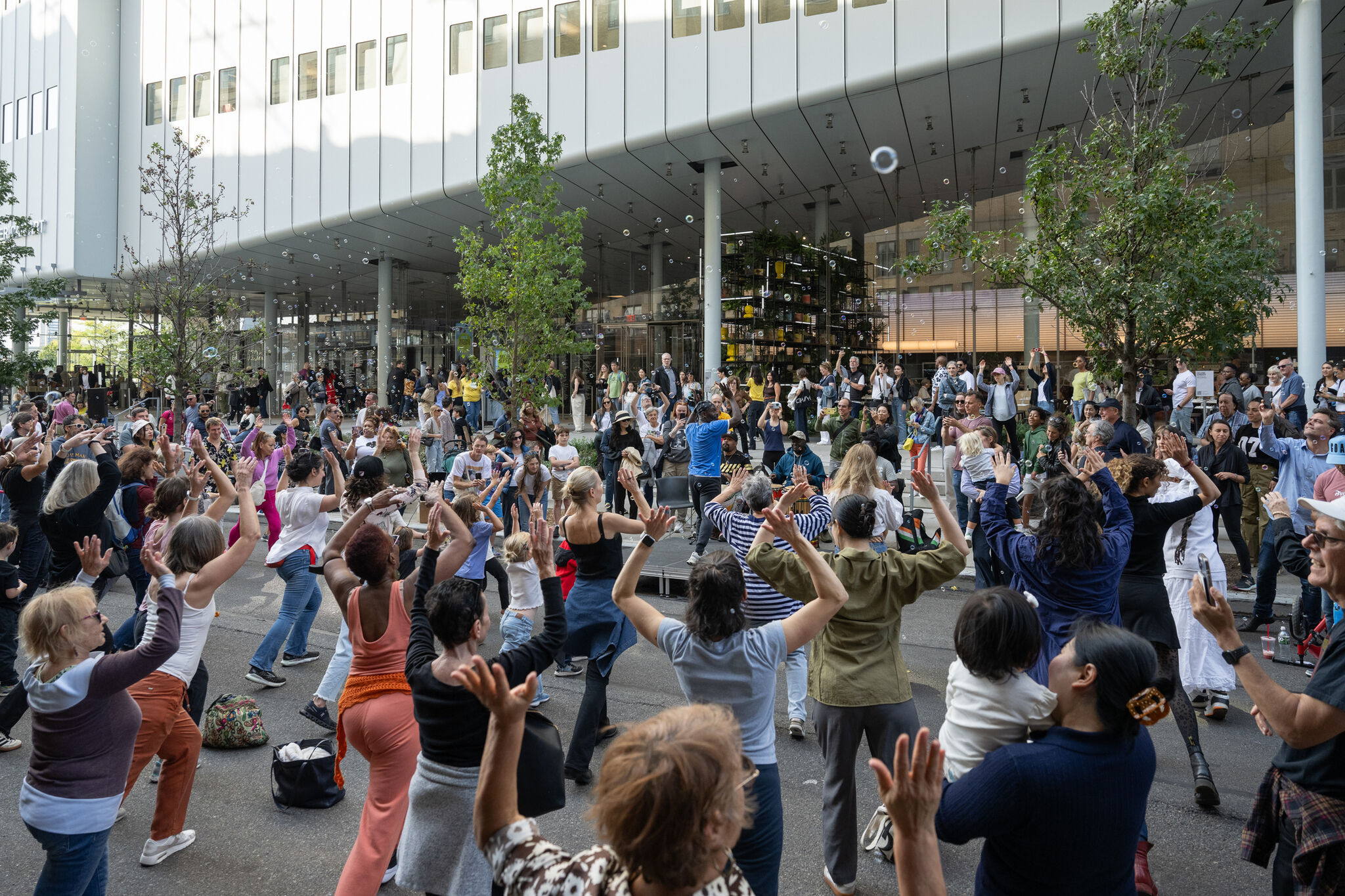
All Ages Ailey Dance Party
Sunday, February 9, 2025
12–5 pm -
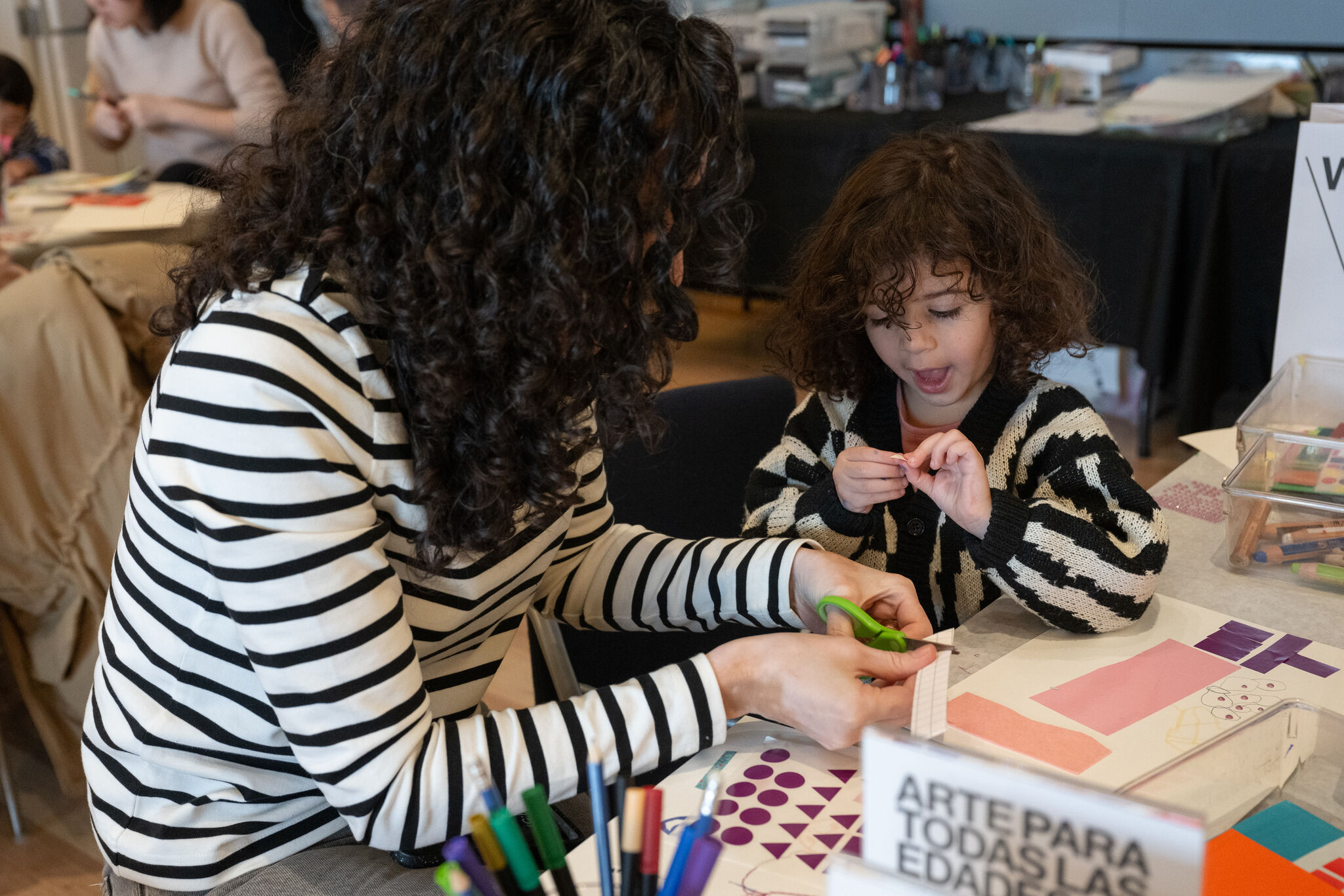
Visual Poetry Collages with The Studio Museum in Harlem
Sunday, February 9, 2025
11 am–3 pm -
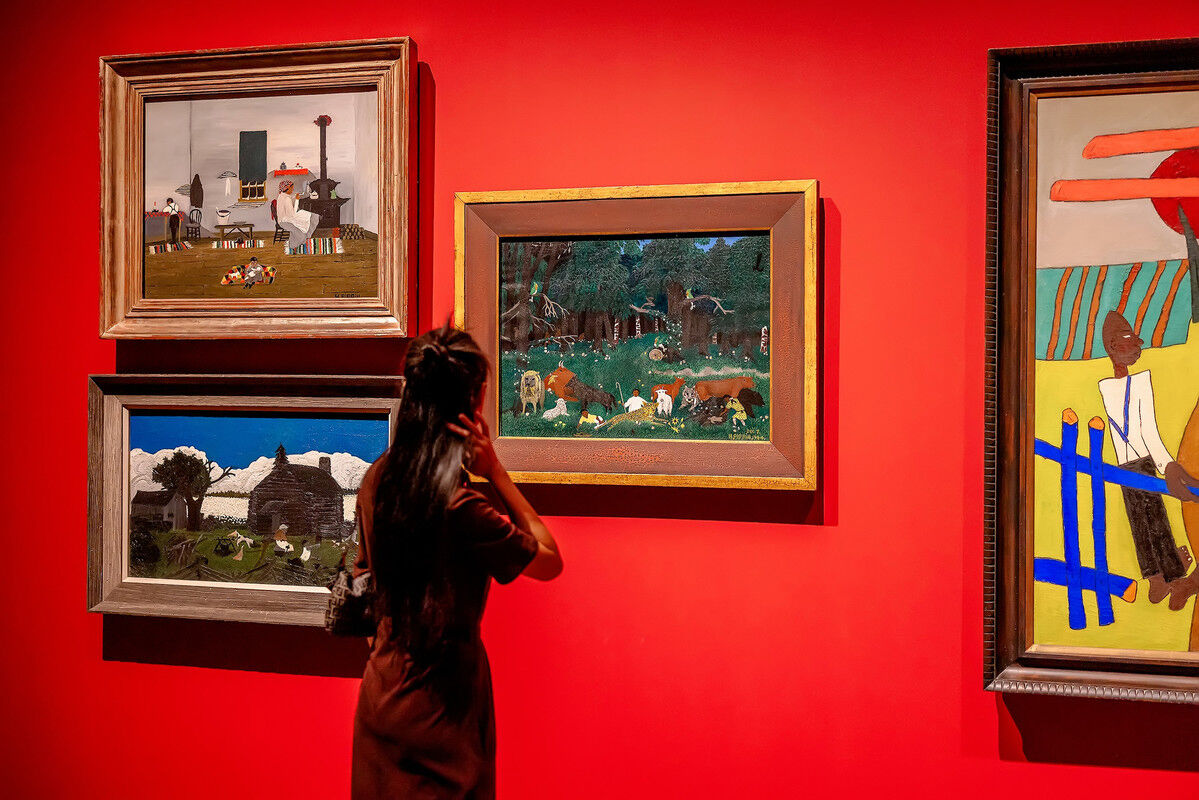
Weekend Member Mornings: Last Look at Edges of Ailey
Repeats
Saturday, February 8, 2025
9:30–10:30 am -

Okwui Okpokwasili and Peter Born: let slip, hold sway
Repeats
Thursday, February 6, 2025
1 pm
Mobile guides
Learn more about selected works from artists and curators.
View guideExhibition Catalogue
Alvin Ailey is one of the most celebrated choreographers of the twentieth century. The creator of iconic works such as Blues Suite, Revelations, and Cry, he is widely recognized for the dance company he founded in 1958 when he was just twenty-seven years old. Ailey imagined and cultivated a platform for modern dance through his innovative repertoire, interdisciplinary sensibility, and support of dancers and choreographers. This expansive volume situates Ailey within a broader social, creative, and cultural context, looking at the artists who influenced and collaborated with him, the spaces and scenes he frequented, the dynamic themes within his dances, and how his vision and work changed contemporary dance.
Essays by artists, scholars, and critics cover topics ranging from the Black church, the South, and the Great Migration to nightclubs, musical influences, and queerness. With more than four hundred images including photographs of works Ailey choreographed, archival materials such as notebooks, sketches, letters, and never-before-published behind-the-scenes photos, and conversations about the legacy of the company with Sylvia Waters, Judith Jamison, and Masazumi Chaya as well as several contemporary dancers and scholars, this study offers an unprecedented full picture of one of the twentieth century’s leading artists and the way his work continues to inspire today’s generation of dancers.
In the News
“I love the look of it, the sound of it, the ideas it floats.” —The New York Times
“One of the most ambitious shows the museum has ever presented…” —The New York Times
“Alvin Ailey has never left the hearts of dancers, and it is that legacy which guides Edges of Ailey.” —Vanity Fair
“As much as ‘Edges of Ailey’ is a celebration of the late, great choreographer, it is also an ode to the world of Black art and to Edwards’s dazzling curatorial vision.” —The Cut
“Edges of Ailey is not just an exhibition; it is a celebration of a living legacy.” —ESSENCE
“...affirms the artist’s place as one of the most culturally and historically significant artistic figures in the United States and the world.” —Forbes
“...it should not be missed” —The Wall Street Journal
“...an expansive new survey….” —Harper's Bazaar
“...not only an homage to Ailey, but a picture of his life and how dance fit into all the other creative pursuits he chased” —W Magazine
“...an essential injection of sheer joy and contemporary cultural history” —Forbes
“It was not at all what I expected, and I am so glad for that.” —Observer
“The first of its kind…” —HYPEBEAST
“... showcase Ailey’s ‘extraordinary curiosity’” —Dance Magazine
“...a masterfully curated celebration of one of America’s greatest artists” —New York Said
“Dancer Alvin Ailey Comes Into Full Focus in Stunning, Genre-Blurring Whitney Show” —Artnet News
“This must-see exhibition at the Whitney Museum of American Art pays excellent tribute to Ailey’s dances” —Ebony
“Ailey receives a show worthy of his greatness…” —The Guardian
"...a visual stream that flows through Ailey’s history and reflects his restlessness, his desire to stay in motion, to keep going beyond 'Revelations.'" —The New Yorker
“...stunning, groundbreaking, exhibition dedicated to the brilliant, mold-shattering choreographic genius Alvin Ailey…” —New York Amsterdam News

